How to write a research plan: Step-by-step guide
Last updated
30 January 2024
Reviewed by
Short on time? Get an AI generated summary of this article instead
Today’s businesses and institutions rely on data and analytics to inform their product and service decisions. These metrics influence how organizations stay competitive and inspire innovation. However, gathering data and insights requires carefully constructed research, and every research project needs a roadmap. This is where a research plan comes into play.
Read this step-by-step guide for writing a detailed research plan that can apply to any project, whether it’s scientific, educational, or business-related.
- What is a research plan?
A research plan is a documented overview of a project in its entirety, from end to end. It details the research efforts, participants, and methods needed, along with any anticipated results. It also outlines the project’s goals and mission, creating layers of steps to achieve those goals within a specified timeline.
Without a research plan, you and your team are flying blind, potentially wasting time and resources to pursue research without structured guidance.
The principal investigator, or PI, is responsible for facilitating the research oversight. They will create the research plan and inform team members and stakeholders of every detail relating to the project. The PI will also use the research plan to inform decision-making throughout the project.
- Why do you need a research plan?
Create a research plan before starting any official research to maximize every effort in pursuing and collecting the research data. Crucially, the plan will model the activities needed at each phase of the research project .
Like any roadmap, a research plan serves as a valuable tool providing direction for those involved in the project—both internally and externally. It will keep you and your immediate team organized and task-focused while also providing necessary definitions and timelines so you can execute your project initiatives with full understanding and transparency.
External stakeholders appreciate a working research plan because it’s a great communication tool, documenting progress and changing dynamics as they arise. Any participants of your planned research sessions will be informed about the purpose of your study, while the exercises will be based on the key messaging outlined in the official plan.
Here are some of the benefits of creating a research plan document for every project:
Project organization and structure
Well-informed participants
All stakeholders and teams align in support of the project
Clearly defined project definitions and purposes
Distractions are eliminated, prioritizing task focus
Timely management of individual task schedules and roles
Costly reworks are avoided
- What should a research plan include?
The different aspects of your research plan will depend on the nature of the project. However, most official research plan documents will include the core elements below. Each aims to define the problem statement , devising an official plan for seeking a solution.
Specific project goals and individual objectives
Ideal strategies or methods for reaching those goals
Required resources
Descriptions of the target audience, sample sizes , demographics, and scopes
Key performance indicators (KPIs)
Project background
Research and testing support
Preliminary studies and progress reporting mechanisms
Cost estimates and change order processes
Depending on the research project’s size and scope, your research plan could be brief—perhaps only a few pages of documented plans. Alternatively, it could be a fully comprehensive report. Either way, it’s an essential first step in dictating your project’s facilitation in the most efficient and effective way.
- How to write a research plan for your project
When you start writing your research plan, aim to be detailed about each step, requirement, and idea. The more time you spend curating your research plan, the more precise your research execution efforts will be.
Account for every potential scenario, and be sure to address each and every aspect of the research.
Consider following this flow to develop a great research plan for your project:

Define your project’s purpose
Start by defining your project’s purpose. Identify what your project aims to accomplish and what you are researching. Remember to use clear language.
Thinking about the project’s purpose will help you set realistic goals and inform how you divide tasks and assign responsibilities. These individual tasks will be your stepping stones to reach your overarching goal.
Additionally, you’ll want to identify the specific problem, the usability metrics needed, and the intended solutions.
Know the following three things about your project’s purpose before you outline anything else:
What you’re doing
Why you’re doing it
What you expect from it
Identify individual objectives
With your overarching project objectives in place, you can identify any individual goals or steps needed to reach those objectives. Break them down into phases or steps. You can work backward from the project goal and identify every process required to facilitate it.
Be mindful to identify each unique task so that you can assign responsibilities to various team members. At this point in your research plan development, you’ll also want to assign priority to those smaller, more manageable steps and phases that require more immediate or dedicated attention.
Select research methods
Once you have outlined your goals, objectives, steps, and tasks, it’s time to drill down on selecting research methods . You’ll want to leverage specific research strategies and processes. When you know what methods will help you reach your goals, you and your teams will have direction to perform and execute your assigned tasks.
Research methods might include any of the following:
User interviews : this is a qualitative research method where researchers engage with participants in one-on-one or group conversations. The aim is to gather insights into their experiences, preferences, and opinions to uncover patterns, trends, and data.
Field studies : this approach allows for a contextual understanding of behaviors, interactions, and processes in real-world settings. It involves the researcher immersing themselves in the field, conducting observations, interviews, or experiments to gather in-depth insights.
Card sorting : participants categorize information by sorting content cards into groups based on their perceived similarities. You might use this process to gain insights into participants’ mental models and preferences when navigating or organizing information on websites, apps, or other systems.
Focus groups : use organized discussions among select groups of participants to provide relevant views and experiences about a particular topic.
Diary studies : ask participants to record their experiences, thoughts, and activities in a diary over a specified period. This method provides a deeper understanding of user experiences, uncovers patterns, and identifies areas for improvement.
Five-second testing: participants are shown a design, such as a web page or interface, for just five seconds. They then answer questions about their initial impressions and recall, allowing you to evaluate the design’s effectiveness.
Surveys : get feedback from participant groups with structured surveys. You can use online forms, telephone interviews, or paper questionnaires to reveal trends, patterns, and correlations.
Tree testing : tree testing involves researching web assets through the lens of findability and navigability. Participants are given a textual representation of the site’s hierarchy (the “tree”) and asked to locate specific information or complete tasks by selecting paths.
Usability testing : ask participants to interact with a product, website, or application to evaluate its ease of use. This method enables you to uncover areas for improvement in digital key feature functionality by observing participants using the product.
Live website testing: research and collect analytics that outlines the design, usability, and performance efficiencies of a website in real time.
There are no limits to the number of research methods you could use within your project. Just make sure your research methods help you determine the following:
What do you plan to do with the research findings?
What decisions will this research inform? How can your stakeholders leverage the research data and results?
Recruit participants and allocate tasks
Next, identify the participants needed to complete the research and the resources required to complete the tasks. Different people will be proficient at different tasks, and having a task allocation plan will allow everything to run smoothly.
Prepare a thorough project summary
Every well-designed research plan will feature a project summary. This official summary will guide your research alongside its communications or messaging. You’ll use the summary while recruiting participants and during stakeholder meetings. It can also be useful when conducting field studies.
Ensure this summary includes all the elements of your research project . Separate the steps into an easily explainable piece of text that includes the following:
An introduction: the message you’ll deliver to participants about the interview, pre-planned questioning, and testing tasks.
Interview questions: prepare questions you intend to ask participants as part of your research study, guiding the sessions from start to finish.
An exit message: draft messaging your teams will use to conclude testing or survey sessions. These should include the next steps and express gratitude for the participant’s time.
Create a realistic timeline
While your project might already have a deadline or a results timeline in place, you’ll need to consider the time needed to execute it effectively.
Realistically outline the time needed to properly execute each supporting phase of research and implementation. And, as you evaluate the necessary schedules, be sure to include additional time for achieving each milestone in case any changes or unexpected delays arise.
For this part of your research plan, you might find it helpful to create visuals to ensure your research team and stakeholders fully understand the information.
Determine how to present your results
A research plan must also describe how you intend to present your results. Depending on the nature of your project and its goals, you might dedicate one team member (the PI) or assume responsibility for communicating the findings yourself.
In this part of the research plan, you’ll articulate how you’ll share the results. Detail any materials you’ll use, such as:
Presentations and slides
A project report booklet
A project findings pamphlet
Documents with key takeaways and statistics
Graphic visuals to support your findings
- Format your research plan
As you create your research plan, you can enjoy a little creative freedom. A plan can assume many forms, so format it how you see fit. Determine the best layout based on your specific project, intended communications, and the preferences of your teams and stakeholders.
Find format inspiration among the following layouts:
Written outlines
Narrative storytelling
Visual mapping
Graphic timelines
Remember, the research plan format you choose will be subject to change and adaptation as your research and findings unfold. However, your final format should ideally outline questions, problems, opportunities, and expectations.
- Research plan example
Imagine you’ve been tasked with finding out how to get more customers to order takeout from an online food delivery platform. The goal is to improve satisfaction and retain existing customers. You set out to discover why more people aren’t ordering and what it is they do want to order or experience.
You identify the need for a research project that helps you understand what drives customer loyalty . But before you jump in and start calling past customers, you need to develop a research plan—the roadmap that provides focus, clarity, and realistic details to the project.
Here’s an example outline of a research plan you might put together:
Project title
Project members involved in the research plan
Purpose of the project (provide a summary of the research plan’s intent)
Objective 1 (provide a short description for each objective)
Objective 2
Objective 3
Proposed timeline
Audience (detail the group you want to research, such as customers or non-customers)
Budget (how much you think it might cost to do the research)
Risk factors/contingencies (any potential risk factors that may impact the project’s success)
Remember, your research plan doesn’t have to reinvent the wheel—it just needs to fit your project’s unique needs and aims.
Customizing a research plan template
Some companies offer research plan templates to help get you started. However, it may make more sense to develop your own customized plan template. Be sure to include the core elements of a great research plan with your template layout, including the following:
Introductions to participants and stakeholders
Background problems and needs statement
Significance, ethics, and purpose
Research methods, questions, and designs
Preliminary beliefs and expectations
Implications and intended outcomes
Realistic timelines for each phase
Conclusion and presentations
How many pages should a research plan be?
Generally, a research plan can vary in length between 500 to 1,500 words. This is roughly three pages of content. More substantial projects will be 2,000 to 3,500 words, taking up four to seven pages of planning documents.
What is the difference between a research plan and a research proposal?
A research plan is a roadmap to success for research teams. A research proposal, on the other hand, is a dissertation aimed at convincing or earning the support of others. Both are relevant in creating a guide to follow to complete a project goal.
What are the seven steps to developing a research plan?
While each research project is different, it’s best to follow these seven general steps to create your research plan:
Defining the problem
Identifying goals
Choosing research methods
Recruiting participants
Preparing the brief or summary
Establishing task timelines
Defining how you will present the findings
Should you be using a customer insights hub?
Do you want to discover previous research faster?
Do you share your research findings with others?
Do you analyze research data?
Start for free today, add your research, and get to key insights faster
Editor’s picks
Last updated: 18 April 2023
Last updated: 27 February 2023
Last updated: 6 February 2023
Last updated: 6 October 2023
Last updated: 5 February 2023
Last updated: 16 April 2023
Last updated: 9 March 2023
Last updated: 12 December 2023
Last updated: 11 March 2024
Last updated: 4 July 2024
Last updated: 6 March 2024
Last updated: 5 March 2024
Last updated: 13 May 2024
Latest articles
Related topics, .css-je19u9{-webkit-align-items:flex-end;-webkit-box-align:flex-end;-ms-flex-align:flex-end;align-items:flex-end;display:-webkit-box;display:-webkit-flex;display:-ms-flexbox;display:flex;-webkit-flex-direction:row;-ms-flex-direction:row;flex-direction:row;-webkit-box-flex-wrap:wrap;-webkit-flex-wrap:wrap;-ms-flex-wrap:wrap;flex-wrap:wrap;-webkit-box-pack:center;-ms-flex-pack:center;-webkit-justify-content:center;justify-content:center;row-gap:0;text-align:center;max-width:671px;}@media (max-width: 1079px){.css-je19u9{max-width:400px;}.css-je19u9>span{white-space:pre;}}@media (max-width: 799px){.css-je19u9{max-width:400px;}.css-je19u9>span{white-space:pre;}} decide what to .css-1kiodld{max-height:56px;display:-webkit-box;display:-webkit-flex;display:-ms-flexbox;display:flex;-webkit-align-items:center;-webkit-box-align:center;-ms-flex-align:center;align-items:center;}@media (max-width: 1079px){.css-1kiodld{display:none;}} build next, decide what to build next.

Users report unexpectedly high data usage, especially during streaming sessions.

Users find it hard to navigate from the home page to relevant playlists in the app.

It would be great to have a sleep timer feature, especially for bedtime listening.

I need better filters to find the songs or artists I’m looking for.
Log in or sign up
Get started for free
We use cookies to give you the best experience possible. By continuing we’ll assume you’re on board with our cookie policy

- A Research Guide
- Research Paper Guide
How to Write a Research Plan
- Research plan definition
- Purpose of a research plan
- Research plan structure
- Step-by-step writing guide
Tips for creating a research plan
- Research plan examples
Research plan: definition and significance
What is the purpose of a research plan.
- Bridging gaps in the existing knowledge related to their subject.
- Reinforcing established research about their subject.
- Introducing insights that contribute to subject understanding.
Research plan structure & template
Introduction.
- What is the existing knowledge about the subject?
- What gaps remain unanswered?
- How will your research enrich understanding, practice, and policy?
Literature review
Expected results.
- Express how your research can challenge established theories in your field.
- Highlight how your work lays the groundwork for future research endeavors.
- Emphasize how your work can potentially address real-world problems.
5 Steps to crafting an effective research plan
Step 1: define the project purpose, step 2: select the research method, step 3: manage the task and timeline, step 4: write a summary, step 5: plan the result presentation.
- Brainstorm Collaboratively: Initiate a collective brainstorming session with peers or experts. Outline the essential questions that warrant exploration and answers within your research.
- Prioritize and Feasibility: Evaluate the list of questions and prioritize those that are achievable and important. Focus on questions that can realistically be addressed.
- Define Key Terminology: Define technical terms pertinent to your research, fostering a shared understanding. Ensure that terms like “church” or “unreached people group” are well-defined to prevent ambiguity.
- Organize your approach: Once well-acquainted with your institution’s regulations, organize each aspect of your research by these guidelines. Allocate appropriate word counts for different sections and components of your research paper.
Research plan example

- Writing a Research Paper
- Research Paper Title
- Research Paper Sources
- Research Paper Problem Statement
- Research Paper Thesis Statement
- Hypothesis for a Research Paper
- Research Question
- Research Paper Outline
- Research Paper Summary
- Research Paper Prospectus
- Research Paper Proposal
- Research Paper Format
- Research Paper Styles
- AMA Style Research Paper
- MLA Style Research Paper
- Chicago Style Research Paper
- APA Style Research Paper
- Research Paper Structure
- Research Paper Cover Page
- Research Paper Abstract
- Research Paper Introduction
- Research Paper Body Paragraph
- Research Paper Literature Review
- Research Paper Background
- Research Paper Methods Section
- Research Paper Results Section
- Research Paper Discussion Section
- Research Paper Conclusion
- Research Paper Appendix
- Research Paper Bibliography
- APA Reference Page
- Annotated Bibliography
- Bibliography vs Works Cited vs References Page
- Research Paper Types
- What is Qualitative Research

Receive paper in 3 Hours!
- Choose the number of pages.
- Select your deadline.
- Complete your order.
Number of Pages
550 words (double spaced)
Deadline: 10 days left
By clicking "Log In", you agree to our terms of service and privacy policy . We'll occasionally send you account related and promo emails.
Sign Up for your FREE account
Have a language expert improve your writing
Run a free plagiarism check in 10 minutes, generate accurate citations for free.
- Knowledge Base
- Starting the research process
- How to Write a Research Proposal | Examples & Templates
How to Write a Research Proposal | Examples & Templates
Published on October 12, 2022 by Shona McCombes and Tegan George. Revised on November 21, 2023.

A research proposal describes what you will investigate, why it’s important, and how you will conduct your research.
The format of a research proposal varies between fields, but most proposals will contain at least these elements:
Introduction
Literature review.
- Research design
Reference list
While the sections may vary, the overall objective is always the same. A research proposal serves as a blueprint and guide for your research plan, helping you get organized and feel confident in the path forward you choose to take.
Table of contents
Research proposal purpose, research proposal examples, research design and methods, contribution to knowledge, research schedule, other interesting articles, frequently asked questions about research proposals.
Academics often have to write research proposals to get funding for their projects. As a student, you might have to write a research proposal as part of a grad school application , or prior to starting your thesis or dissertation .
In addition to helping you figure out what your research can look like, a proposal can also serve to demonstrate why your project is worth pursuing to a funder, educational institution, or supervisor.
| Show your reader why your project is interesting, original, and important. | |
| Demonstrate your comfort and familiarity with your field. Show that you understand the current state of research on your topic. | |
| Make a case for your . Demonstrate that you have carefully thought about the data, tools, and procedures necessary to conduct your research. | |
| Confirm that your project is feasible within the timeline of your program or funding deadline. |
Research proposal length
The length of a research proposal can vary quite a bit. A bachelor’s or master’s thesis proposal can be just a few pages, while proposals for PhD dissertations or research funding are usually much longer and more detailed. Your supervisor can help you determine the best length for your work.
One trick to get started is to think of your proposal’s structure as a shorter version of your thesis or dissertation , only without the results , conclusion and discussion sections.
Download our research proposal template
Here's why students love Scribbr's proofreading services
Discover proofreading & editing
Writing a research proposal can be quite challenging, but a good starting point could be to look at some examples. We’ve included a few for you below.
- Example research proposal #1: “A Conceptual Framework for Scheduling Constraint Management”
- Example research proposal #2: “Medical Students as Mediators of Change in Tobacco Use”
Like your dissertation or thesis, the proposal will usually have a title page that includes:
- The proposed title of your project
- Your supervisor’s name
- Your institution and department
The first part of your proposal is the initial pitch for your project. Make sure it succinctly explains what you want to do and why.
Your introduction should:
- Introduce your topic
- Give necessary background and context
- Outline your problem statement and research questions
To guide your introduction , include information about:
- Who could have an interest in the topic (e.g., scientists, policymakers)
- How much is already known about the topic
- What is missing from this current knowledge
- What new insights your research will contribute
- Why you believe this research is worth doing
Prevent plagiarism. Run a free check.
As you get started, it’s important to demonstrate that you’re familiar with the most important research on your topic. A strong literature review shows your reader that your project has a solid foundation in existing knowledge or theory. It also shows that you’re not simply repeating what other people have already done or said, but rather using existing research as a jumping-off point for your own.
In this section, share exactly how your project will contribute to ongoing conversations in the field by:
- Comparing and contrasting the main theories, methods, and debates
- Examining the strengths and weaknesses of different approaches
- Explaining how will you build on, challenge, or synthesize prior scholarship
Following the literature review, restate your main objectives . This brings the focus back to your own project. Next, your research design or methodology section will describe your overall approach, and the practical steps you will take to answer your research questions.
| ? or ? , , or research design? | |
| , )? ? | |
| , , , )? | |
| ? |
To finish your proposal on a strong note, explore the potential implications of your research for your field. Emphasize again what you aim to contribute and why it matters.
For example, your results might have implications for:
- Improving best practices
- Informing policymaking decisions
- Strengthening a theory or model
- Challenging popular or scientific beliefs
- Creating a basis for future research
Last but not least, your research proposal must include correct citations for every source you have used, compiled in a reference list . To create citations quickly and easily, you can use our free APA citation generator .
Some institutions or funders require a detailed timeline of the project, asking you to forecast what you will do at each stage and how long it may take. While not always required, be sure to check the requirements of your project.
Here’s an example schedule to help you get started. You can also download a template at the button below.
Download our research schedule template
| Research phase | Objectives | Deadline |
|---|---|---|
| 1. Background research and literature review | 20th January | |
| 2. Research design planning | and data analysis methods | 13th February |
| 3. Data collection and preparation | with selected participants and code interviews | 24th March |
| 4. Data analysis | of interview transcripts | 22nd April |
| 5. Writing | 17th June | |
| 6. Revision | final work | 28th July |
If you are applying for research funding, chances are you will have to include a detailed budget. This shows your estimates of how much each part of your project will cost.
Make sure to check what type of costs the funding body will agree to cover. For each item, include:
- Cost : exactly how much money do you need?
- Justification : why is this cost necessary to complete the research?
- Source : how did you calculate the amount?
To determine your budget, think about:
- Travel costs : do you need to go somewhere to collect your data? How will you get there, and how much time will you need? What will you do there (e.g., interviews, archival research)?
- Materials : do you need access to any tools or technologies?
- Help : do you need to hire any research assistants for the project? What will they do, and how much will you pay them?
If you want to know more about the research process , methodology , research bias , or statistics , make sure to check out some of our other articles with explanations and examples.
Methodology
- Sampling methods
- Simple random sampling
- Stratified sampling
- Cluster sampling
- Likert scales
- Reproducibility
Statistics
- Null hypothesis
- Statistical power
- Probability distribution
- Effect size
- Poisson distribution
Research bias
- Optimism bias
- Cognitive bias
- Implicit bias
- Hawthorne effect
- Anchoring bias
- Explicit bias
Once you’ve decided on your research objectives , you need to explain them in your paper, at the end of your problem statement .
Keep your research objectives clear and concise, and use appropriate verbs to accurately convey the work that you will carry out for each one.
I will compare …
A research aim is a broad statement indicating the general purpose of your research project. It should appear in your introduction at the end of your problem statement , before your research objectives.
Research objectives are more specific than your research aim. They indicate the specific ways you’ll address the overarching aim.
A PhD, which is short for philosophiae doctor (doctor of philosophy in Latin), is the highest university degree that can be obtained. In a PhD, students spend 3–5 years writing a dissertation , which aims to make a significant, original contribution to current knowledge.
A PhD is intended to prepare students for a career as a researcher, whether that be in academia, the public sector, or the private sector.
A master’s is a 1- or 2-year graduate degree that can prepare you for a variety of careers.
All master’s involve graduate-level coursework. Some are research-intensive and intend to prepare students for further study in a PhD; these usually require their students to write a master’s thesis . Others focus on professional training for a specific career.
Critical thinking refers to the ability to evaluate information and to be aware of biases or assumptions, including your own.
Like information literacy , it involves evaluating arguments, identifying and solving problems in an objective and systematic way, and clearly communicating your ideas.
The best way to remember the difference between a research plan and a research proposal is that they have fundamentally different audiences. A research plan helps you, the researcher, organize your thoughts. On the other hand, a dissertation proposal or research proposal aims to convince others (e.g., a supervisor, a funding body, or a dissertation committee) that your research topic is relevant and worthy of being conducted.
Cite this Scribbr article
If you want to cite this source, you can copy and paste the citation or click the “Cite this Scribbr article” button to automatically add the citation to our free Citation Generator.
McCombes, S. & George, T. (2023, November 21). How to Write a Research Proposal | Examples & Templates. Scribbr. Retrieved July 27, 2024, from https://www.scribbr.com/research-process/research-proposal/
Is this article helpful?
Shona McCombes
Other students also liked, how to write a problem statement | guide & examples, writing strong research questions | criteria & examples, how to write a literature review | guide, examples, & templates, get unlimited documents corrected.
✔ Free APA citation check included ✔ Unlimited document corrections ✔ Specialized in correcting academic texts

How to Write a Research Proposal: (with Examples & Templates)

Table of Contents
Before conducting a study, a research proposal should be created that outlines researchers’ plans and methodology and is submitted to the concerned evaluating organization or person. Creating a research proposal is an important step to ensure that researchers are on track and are moving forward as intended. A research proposal can be defined as a detailed plan or blueprint for the proposed research that you intend to undertake. It provides readers with a snapshot of your project by describing what you will investigate, why it is needed, and how you will conduct the research.
Your research proposal should aim to explain to the readers why your research is relevant and original, that you understand the context and current scenario in the field, have the appropriate resources to conduct the research, and that the research is feasible given the usual constraints.
This article will describe in detail the purpose and typical structure of a research proposal , along with examples and templates to help you ace this step in your research journey.
What is a Research Proposal ?
A research proposal¹ ,² can be defined as a formal report that describes your proposed research, its objectives, methodology, implications, and other important details. Research proposals are the framework of your research and are used to obtain approvals or grants to conduct the study from various committees or organizations. Consequently, research proposals should convince readers of your study’s credibility, accuracy, achievability, practicality, and reproducibility.
With research proposals , researchers usually aim to persuade the readers, funding agencies, educational institutions, and supervisors to approve the proposal. To achieve this, the report should be well structured with the objectives written in clear, understandable language devoid of jargon. A well-organized research proposal conveys to the readers or evaluators that the writer has thought out the research plan meticulously and has the resources to ensure timely completion.
Purpose of Research Proposals
A research proposal is a sales pitch and therefore should be detailed enough to convince your readers, who could be supervisors, ethics committees, universities, etc., that what you’re proposing has merit and is feasible . Research proposals can help students discuss their dissertation with their faculty or fulfill course requirements and also help researchers obtain funding. A well-structured proposal instills confidence among readers about your ability to conduct and complete the study as proposed.
Research proposals can be written for several reasons:³
- To describe the importance of research in the specific topic
- Address any potential challenges you may encounter
- Showcase knowledge in the field and your ability to conduct a study
- Apply for a role at a research institute
- Convince a research supervisor or university that your research can satisfy the requirements of a degree program
- Highlight the importance of your research to organizations that may sponsor your project
- Identify implications of your project and how it can benefit the audience
What Goes in a Research Proposal?
Research proposals should aim to answer the three basic questions—what, why, and how.
The What question should be answered by describing the specific subject being researched. It should typically include the objectives, the cohort details, and the location or setting.
The Why question should be answered by describing the existing scenario of the subject, listing unanswered questions, identifying gaps in the existing research, and describing how your study can address these gaps, along with the implications and significance.
The How question should be answered by describing the proposed research methodology, data analysis tools expected to be used, and other details to describe your proposed methodology.
Research Proposal Example
Here is a research proposal sample template (with examples) from the University of Rochester Medical Center. 4 The sections in all research proposals are essentially the same although different terminology and other specific sections may be used depending on the subject.

Structure of a Research Proposal
If you want to know how to make a research proposal impactful, include the following components:¹
1. Introduction
This section provides a background of the study, including the research topic, what is already known about it and the gaps, and the significance of the proposed research.
2. Literature review
This section contains descriptions of all the previous relevant studies pertaining to the research topic. Every study cited should be described in a few sentences, starting with the general studies to the more specific ones. This section builds on the understanding gained by readers in the Introduction section and supports it by citing relevant prior literature, indicating to readers that you have thoroughly researched your subject.
3. Objectives
Once the background and gaps in the research topic have been established, authors must now state the aims of the research clearly. Hypotheses should be mentioned here. This section further helps readers understand what your study’s specific goals are.
4. Research design and methodology
Here, authors should clearly describe the methods they intend to use to achieve their proposed objectives. Important components of this section include the population and sample size, data collection and analysis methods and duration, statistical analysis software, measures to avoid bias (randomization, blinding), etc.
5. Ethical considerations
This refers to the protection of participants’ rights, such as the right to privacy, right to confidentiality, etc. Researchers need to obtain informed consent and institutional review approval by the required authorities and mention this clearly for transparency.
6. Budget/funding
Researchers should prepare their budget and include all expected expenditures. An additional allowance for contingencies such as delays should also be factored in.
7. Appendices
This section typically includes information that supports the research proposal and may include informed consent forms, questionnaires, participant information, measurement tools, etc.
8. Citations

Important Tips for Writing a Research Proposal
Writing a research proposal begins much before the actual task of writing. Planning the research proposal structure and content is an important stage, which if done efficiently, can help you seamlessly transition into the writing stage. 3,5
The Planning Stage
- Manage your time efficiently. Plan to have the draft version ready at least two weeks before your deadline and the final version at least two to three days before the deadline.
- What is the primary objective of your research?
- Will your research address any existing gap?
- What is the impact of your proposed research?
- Do people outside your field find your research applicable in other areas?
- If your research is unsuccessful, would there still be other useful research outcomes?
The Writing Stage
- Create an outline with main section headings that are typically used.
- Focus only on writing and getting your points across without worrying about the format of the research proposal , grammar, punctuation, etc. These can be fixed during the subsequent passes. Add details to each section heading you created in the beginning.
- Ensure your sentences are concise and use plain language. A research proposal usually contains about 2,000 to 4,000 words or four to seven pages.
- Don’t use too many technical terms and abbreviations assuming that the readers would know them. Define the abbreviations and technical terms.
- Ensure that the entire content is readable. Avoid using long paragraphs because they affect the continuity in reading. Break them into shorter paragraphs and introduce some white space for readability.
- Focus on only the major research issues and cite sources accordingly. Don’t include generic information or their sources in the literature review.
- Proofread your final document to ensure there are no grammatical errors so readers can enjoy a seamless, uninterrupted read.
- Use academic, scholarly language because it brings formality into a document.
- Ensure that your title is created using the keywords in the document and is neither too long and specific nor too short and general.
- Cite all sources appropriately to avoid plagiarism.
- Make sure that you follow guidelines, if provided. This includes rules as simple as using a specific font or a hyphen or en dash between numerical ranges.
- Ensure that you’ve answered all questions requested by the evaluating authority.
Key Takeaways
Here’s a summary of the main points about research proposals discussed in the previous sections:
- A research proposal is a document that outlines the details of a proposed study and is created by researchers to submit to evaluators who could be research institutions, universities, faculty, etc.
- Research proposals are usually about 2,000-4,000 words long, but this depends on the evaluating authority’s guidelines.
- A good research proposal ensures that you’ve done your background research and assessed the feasibility of the research.
- Research proposals have the following main sections—introduction, literature review, objectives, methodology, ethical considerations, and budget.

Frequently Asked Questions
Q1. How is a research proposal evaluated?
A1. In general, most evaluators, including universities, broadly use the following criteria to evaluate research proposals . 6
- Significance —Does the research address any important subject or issue, which may or may not be specific to the evaluator or university?
- Content and design —Is the proposed methodology appropriate to answer the research question? Are the objectives clear and well aligned with the proposed methodology?
- Sample size and selection —Is the target population or cohort size clearly mentioned? Is the sampling process used to select participants randomized, appropriate, and free of bias?
- Timing —Are the proposed data collection dates mentioned clearly? Is the project feasible given the specified resources and timeline?
- Data management and dissemination —Who will have access to the data? What is the plan for data analysis?
Q2. What is the difference between the Introduction and Literature Review sections in a research proposal ?
A2. The Introduction or Background section in a research proposal sets the context of the study by describing the current scenario of the subject and identifying the gaps and need for the research. A Literature Review, on the other hand, provides references to all prior relevant literature to help corroborate the gaps identified and the research need.
Q3. How long should a research proposal be?
A3. Research proposal lengths vary with the evaluating authority like universities or committees and also the subject. Here’s a table that lists the typical research proposal lengths for a few universities.
| Arts programs | 1,000-1,500 | |
| University of Birmingham | Law School programs | 2,500 |
| PhD | 2,500 | |
| 2,000 | ||
| Research degrees | 2,000-3,500 |
Q4. What are the common mistakes to avoid in a research proposal ?
A4. Here are a few common mistakes that you must avoid while writing a research proposal . 7
- No clear objectives: Objectives should be clear, specific, and measurable for the easy understanding among readers.
- Incomplete or unconvincing background research: Background research usually includes a review of the current scenario of the particular industry and also a review of the previous literature on the subject. This helps readers understand your reasons for undertaking this research because you identified gaps in the existing research.
- Overlooking project feasibility: The project scope and estimates should be realistic considering the resources and time available.
- Neglecting the impact and significance of the study: In a research proposal , readers and evaluators look for the implications or significance of your research and how it contributes to the existing research. This information should always be included.
- Unstructured format of a research proposal : A well-structured document gives confidence to evaluators that you have read the guidelines carefully and are well organized in your approach, consequently affirming that you will be able to undertake the research as mentioned in your proposal.
- Ineffective writing style: The language used should be formal and grammatically correct. If required, editors could be consulted, including AI-based tools such as Paperpal , to refine the research proposal structure and language.
Thus, a research proposal is an essential document that can help you promote your research and secure funds and grants for conducting your research. Consequently, it should be well written in clear language and include all essential details to convince the evaluators of your ability to conduct the research as proposed.
This article has described all the important components of a research proposal and has also provided tips to improve your writing style. We hope all these tips will help you write a well-structured research proposal to ensure receipt of grants or any other purpose.
References
- Sudheesh K, Duggappa DR, Nethra SS. How to write a research proposal? Indian J Anaesth. 2016;60(9):631-634. Accessed July 15, 2024. https://www.ncbi.nlm.nih.gov/pmc/articles/PMC5037942/
- Writing research proposals. Harvard College Office of Undergraduate Research and Fellowships. Harvard University. Accessed July 14, 2024. https://uraf.harvard.edu/apply-opportunities/app-components/essays/research-proposals
- What is a research proposal? Plus how to write one. Indeed website. Accessed July 17, 2024. https://www.indeed.com/career-advice/career-development/research-proposal
- Research proposal template. University of Rochester Medical Center. Accessed July 16, 2024. https://www.urmc.rochester.edu/MediaLibraries/URMCMedia/pediatrics/research/documents/Research-proposal-Template.pdf
- Tips for successful proposal writing. Johns Hopkins University. Accessed July 17, 2024. https://research.jhu.edu/wp-content/uploads/2018/09/Tips-for-Successful-Proposal-Writing.pdf
- Formal review of research proposals. Cornell University. Accessed July 18, 2024. https://irp.dpb.cornell.edu/surveys/survey-assessment-review-group/research-proposals
- 7 Mistakes you must avoid in your research proposal. Aveksana (via LinkedIn). Accessed July 17, 2024. https://www.linkedin.com/pulse/7-mistakes-you-must-avoid-your-research-proposal-aveksana-cmtwf/
Paperpal is a comprehensive AI writing toolkit that helps students and researchers achieve 2x the writing in half the time. It leverages 21+ years of STM experience and insights from millions of research articles to provide in-depth academic writing, language editing, and submission readiness support to help you write better, faster.
Get accurate academic translations, rewriting support, grammar checks, vocabulary suggestions, and generative AI assistance that delivers human precision at machine speed. Try for free or upgrade to Paperpal Prime starting at US$19 a month to access premium features, including consistency, plagiarism, and 30+ submission readiness checks to help you succeed.
Experience the future of academic writing – Sign up to Paperpal and start writing for free!
Related Reads:
- How to Paraphrase Research Papers Effectively
- How to Cite Social Media Sources in Academic Writing?
- What is the Importance of a Concept Paper and How to Write It
APA format: Basic Guide for Researchers
You may also like, how to choose a dissertation topic, how to write a phd research proposal, how to write an academic paragraph (step-by-step guide), five things authors need to know when using..., 7 best referencing tools and citation management software..., maintaining academic integrity with paperpal’s generative ai writing..., research funding basics: what should a grant proposal..., how to write an abstract in research papers..., how to write dissertation acknowledgements.
FLEET LIBRARY | Research Guides
Rhode island school of design, create a research plan: research plan.
- Research Plan
- Literature Review
- Ulrich's Global Serials Directory
- Related Guides
A research plan is a framework that shows how you intend to approach your topic. The plan can take many forms: a written outline, a narrative, a visual/concept map or timeline. It's a document that will change and develop as you conduct your research. Components of a research plan
1. Research conceptualization - introduces your research question
2. Research methodology - describes your approach to the research question
3. Literature review, critical evaluation and synthesis - systematic approach to locating,
reviewing and evaluating the work (text, exhibitions, critiques, etc) relating to your topic
4. Communication - geared toward an intended audience, shows evidence of your inquiry
Research conceptualization refers to the ability to identify specific research questions, problems or opportunities that are worthy of inquiry. Research conceptualization also includes the skills and discipline that go beyond the initial moment of conception, and which enable the researcher to formulate and develop an idea into something researchable ( Newbury 373).
Research methodology refers to the knowledge and skills required to select and apply appropriate methods to carry through the research project ( Newbury 374) .
Method describes a single mode of proceeding; methodology describes the overall process.
Method - a way of doing anything especially according to a defined and regular plan; a mode of procedure in any activity
Methodology - the study of the direction and implications of empirical research, or the sustainability of techniques employed in it; a method or body of methods used in a particular field of study or activity *Browse a list of research methodology books or this guide on Art & Design Research
Literature Review, critical evaluation & synthesis
A literature review is a systematic approach to locating, reviewing, and evaluating the published work and work in progress of scholars, researchers, and practitioners on a given topic.
Critical evaluation and synthesis is the ability to handle (or process) existing sources. It includes knowledge of the sources of literature and contextual research field within which the person is working ( Newbury 373).
Literature reviews are done for many reasons and situations. Here's a short list:
| to learn about a field of study to understand current knowledge on a subject to formulate questions & identify a research problem to focus the purpose of one's research to contribute new knowledge to a field personal knowledge intellectual curiosity | to prepare for architectural program writing academic degrees grant applications proposal writing academic research planning funding |
Sources to consult while conducting a literature review:
Online catalogs of local, regional, national, and special libraries
meta-catalogs such as worldcat , Art Discovery Group , europeana , world digital library or RIBA
subject-specific online article databases (such as the Avery Index, JSTOR, Project Muse)
digital institutional repositories such as Digital Commons @RISD ; see Registry of Open Access Repositories
Open Access Resources recommended by RISD Research LIbrarians
works cited in scholarly books and articles
print bibliographies
the internet-locate major nonprofit, research institutes, museum, university, and government websites
search google scholar to locate grey literature & referenced citations
trade and scholarly publishers
fellow scholars and peers
Communication
Communication refers to the ability to
- structure a coherent line of inquiry
- communicate your findings to your intended audience
- make skilled use of visual material to express ideas for presentations, writing, and the creation of exhibitions ( Newbury 374)
Research plan framework: Newbury, Darren. "Research Training in the Creative Arts and Design." The Routledge Companion to Research in the Arts . Ed. Michael Biggs and Henrik Karlsson. New York: Routledge, 2010. 368-87. Print.
About the author
Except where otherwise noted, this guide is subject to a Creative Commons Attribution license
source document
Routledge Companion to Research in the Arts
- Next: Literature Review >>
- Last Updated: Sep 20, 2023 5:05 PM
- URL: https://risd.libguides.com/researchplan

How to Prepare a PhD Research Plan/Schedule?
PhD research plan is a structured schedule for completing different objectives and milestones during a given timeframe. Scholars are usually unaware of it. Let us find out how to prepare it.
Between March 2021 to 2022, I read almost 15 different research proposals from students (for their projects) and only a single one, I found, with a comprehensive research plan for 3 years. Which is still not, kind of practical, probably copied from other students.
Such entities are not known to over 90% of students, if some know that because their university asked for but unfortunately, this basic procedure lacks penetration among students. I don’t know the exact reason, but students lack a basic understanding of the research process.
Meaning, that they don’t know or perhaps don’t complete their course work needly. PhD research requires many documents, SOPs and write-ups, before even starting it. For example, a rough research plan, research proposal, initial interview, competence screening, grant proposal and so on.
However, the requirement varies among universities and thus knowledge regarding basic procedures often also varies among students. So I’m not blaming students but certainly, it is the fault of the university side, as well.
When you come up with a research proposal with a research schedule or entire plant, certainly it will create a positive image and good reputation. So it is important. But how to prepare it?
Hey, there I’m Dr Tushar, a PhD tutor and coach. In this article, we will understand how we can prepare a structured plan for the PhD research and how to execute it.
So let’s get started.
How to prepare a PhD research plan/schedule?
A PhD research plan or schedule can be prepared using the GANTT chart which includes a month, semester or year-wise planning of the entire PhD research work.
First, enlist goals and objectives.
It’s not about your research objective enlisted in your proposal. I’m talking about the objectives of your PhD. Take a look at some of the objectives.
| Course work | Dry lab work |
| Proposing PhD title | Data collection |
| PhD synopsis | Data analysis- statistical, computational and other |
| Ethical approval | Thesis writing |
| Trial and research work approval | Thesis drafting |
| Review literature | Poster Preparation |
| Questionnaire design | Presentations |
| Fieldwork | Drafting a research paper |
| Conducting the survey | Drafting a thesis |
| Designing the experiment | Thesis completion |
| Wet lab work | Viva |
Note that these are all the objectives that should be completed during the PhD, but not limited to a specific subject. Note you have to show how you can complete or achieve each objective during the entire tenure of your work.
And that is what the plan/schedule is all about. Next, explain the time duration. The time required to complete each goal, roughly. For example, a semester or a year to complete the course work or 4 to 8 months for completion of ethical approval.
Now two things must be known to you, at this point in time.
- First, enlist the time required to complete each objective, as aforementioned.
- Second, what goals would you complete during each semester?
For instance, course work takes a semester to complete, but during the period a scholar can also craft their PhD research title, research proposal, ethical approval and grant proposals.
Now it is also crucial to know that there is no time bound to complete goals, but it should be completed as you explained. Let’s say you can plant it for 3 years, 4 or even 5 years depending on the weightage of your work.
In summary, the answer to the question of how to prepare a research plan is,
- Enlist your goals or objectives.
- Decide the time required to complete each goal.
- Prepare a GANTT chart.
Now you have prepared zero-date planning for your research but how to present it? The answer is a GANTT chart.
GANTT chart for PhD research plan:
GANTT chart is a task manager and graphical presentation of how and how many tasks are completed or should be completed against a given time duration. Take a look at the image below.
How can you prepare one?
Open MS Excel (on Windows) or numbers (on Mac).
Enlist goals or objectives in a column.
Enlist years (duration of PhD) in a row and bifurcate them into individual semesters. You can also prepare a month-wise plan, that’s totally up to you. In my opinion, semester-wise planning is good because research is a lengthy and time-consuming process. So monthly planning would not work.
To make a chart more attractive and readable use colors, as I used. Now mark a ‘cell’ against a column and row showing the objective which you are going to complete in a semester. Take a look.
After the end of this, your GANTT chart would look like this.
You can prepare a month-wise planning, individual semester-wise planning and goal-wise planning etc. I will explain these things in upcoming articles on 5 different types of GANTT charts for PhD.
Custom writing services:
If you find difficulties in preparing a research plan, synopsis, proposal or GANTT chart. We can work on behalf of you. Our costume services are,
- Synopsis writing
- Project writing
- Research proposal writing
- Research planning and GANTT chart preparation.
You can contact us at [email protected] or [email protected] to get more information.
Wrapping up:
Planning and executing a research schedule are two different things. Oftentimes, students just prepare as per the requirements and then do work as per their convenience. Then they are stuck in one place and just work around the time.
Plan things. Make your own GANTT chart, put it on your work table or stick it on a wall so that you can see it daily. Try to achieve each goal in time. Trust me things will work and you will complete your PhD before anyone else.

Dr. Tushar Chauhan is a Scientist, Blogger and Scientific-writer. He has completed PhD in Genetics. Dr. Chauhan is a PhD coach and tutor.
Share this:

- Share on Facebook
- Share on Twitter
- Share on Pinterest
- Share on Linkedin
- Share via Email
About The Author

Dr Tushar Chauhan
Related posts.

Why is it called a Doctor of Philosophy?

Preparing for a PhD Viva
Leave a comment cancel reply.
Your email address will not be published. Required fields are marked *
Save my name, email, and website in this browser for the next time I comment.
Notify me of follow-up comments by email.
Notify me of new posts by email.
Newly Launched - AI Presentation Maker

Researched by Consultants from Top-Tier Management Companies

AI PPT Maker
Powerpoint Templates
Icon Bundle
Kpi Dashboard
Professional
Business Plans
Swot Analysis
Gantt Chart
Business Proposal
Marketing Plan
Project Management
Business Case
Business Model
Cyber Security
Business PPT
Digital Marketing
Digital Transformation
Human Resources
Product Management
Artificial Intelligence
Company Profile
Acknowledgement PPT
PPT Presentation
Reports Brochures
One Page Pitch
Interview PPT
All Categories
Top 5 Research Project Plan Templates with Samples and Examples

Samradni Pradhan
Research projects are essential to any business or organization's growth and success. Whether you're planning a market research study, conducting a scientific experiment, or developing a new product, a well-designed research project plan is vital to ensure that your project stays on track and achieves its objectives. With so many types of research projects, it can take some time to figure out where to start, when developing a project plan. That's where our PPT Templates come in. Using a pre-designed research project plan template can save time, reduce errors, and ensure that your project stays on track. In this blog post, we'll introduce you to the Top 5 Research Project Plan Templates with samples and examples, to help you choose the right template for your project.
Additionally, if you want to explore some research plan templates, you can check them out here !
Template 1: 30-60-90-Days Plan for Proposing and Designing Business Research Project Proposal
Here’s a comprehensive solution for anyone who wants to create a winning research proposal for their business project. This PPT Template contains all information, from the first initial planning stages to the final presentation of the proposal. The template is organized into three sections, each representing a different phase of the research project: the initial 30 days, the next 60 days, and the final 90 days. Each section includes an area that outlines the key tasks and deliverables for that phase of the project initiation . This PPT Layout acts as an essential tool for anyone who wants to create a compelling and effective research proposal. With its comprehensive structure, customizable slides, and engaging visuals, this template will help you win support for your project and take your business to the next level. Go ahead and download it right away!
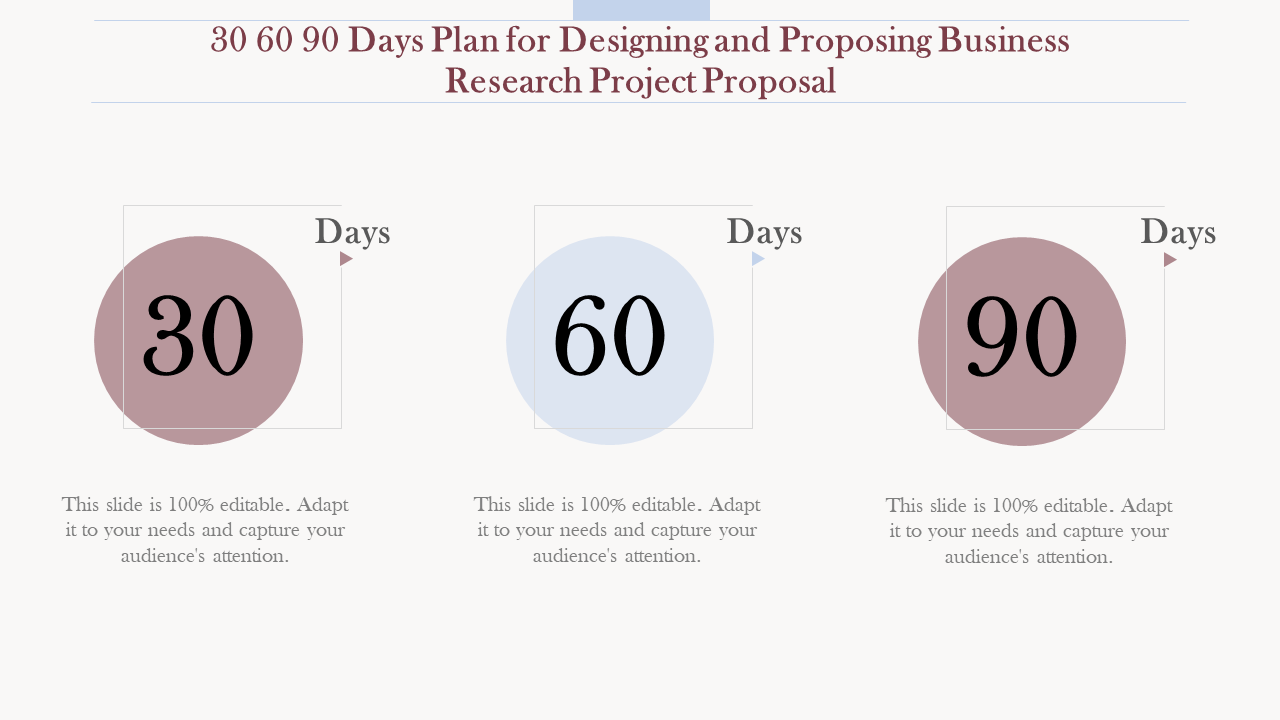
Download Now!
Template 2: Plan Of Action for Designing and Proposing Business Research Project Services PPT Slideshow
Introducing a comprehensive and customizable solution for businesses and organizations looking to design and propose a research project. The template is divided into four stages: project initiation, research, analytics , and presentation. You can focus on your tasks and stay on track by comprehending information for each of these four stages. The PPT Slide also includes a range of graphics, charts, and diagrams that can be used to illustrate key points in the proposal visually. These graphics are designed to be easy to understand and visually appealing, making communicating complex ideas to stakeholders and decision-makers easier. This template will help you effectively plan, research , analyze, and present your research project, ensuring its success and a positive impact on your business or organization. Go ahead and grab this template today!
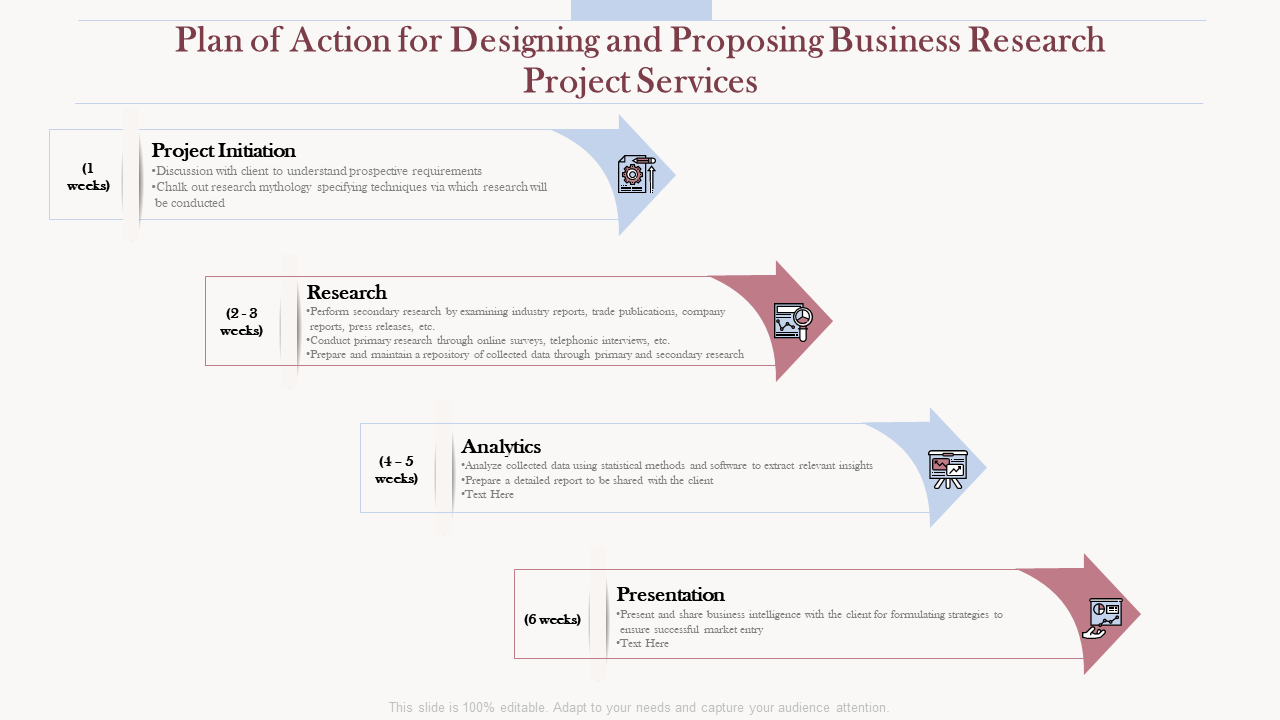
Template 3: Project Management Research Phases with Planning
Introducing an essential tool for businesses and organizations, looking to manage their research projects effectively. This comprehensive PPT Set is designed to guide users through each phase of the research project, from initiation to closing, ensuring that every aspect of the project is planned and executed efficiently. The template comprises five phases: initiation, planning, execution, controlling/monitoring, and closing. The initiation phase focuses on project plan creation and stakeholders' recognition. The planning phase comprises plan creation, resource identification, and cost projection. The execution phase includes information on task completion and resource acquisition. In the controlling/monitoring phase, reliability and expense estimates are tracked. Finally, stakeholder and resource management are included in the closing stage of project completion. This ensures that your work is correctly divided and also ensures that you focus on specific stages at the right time.
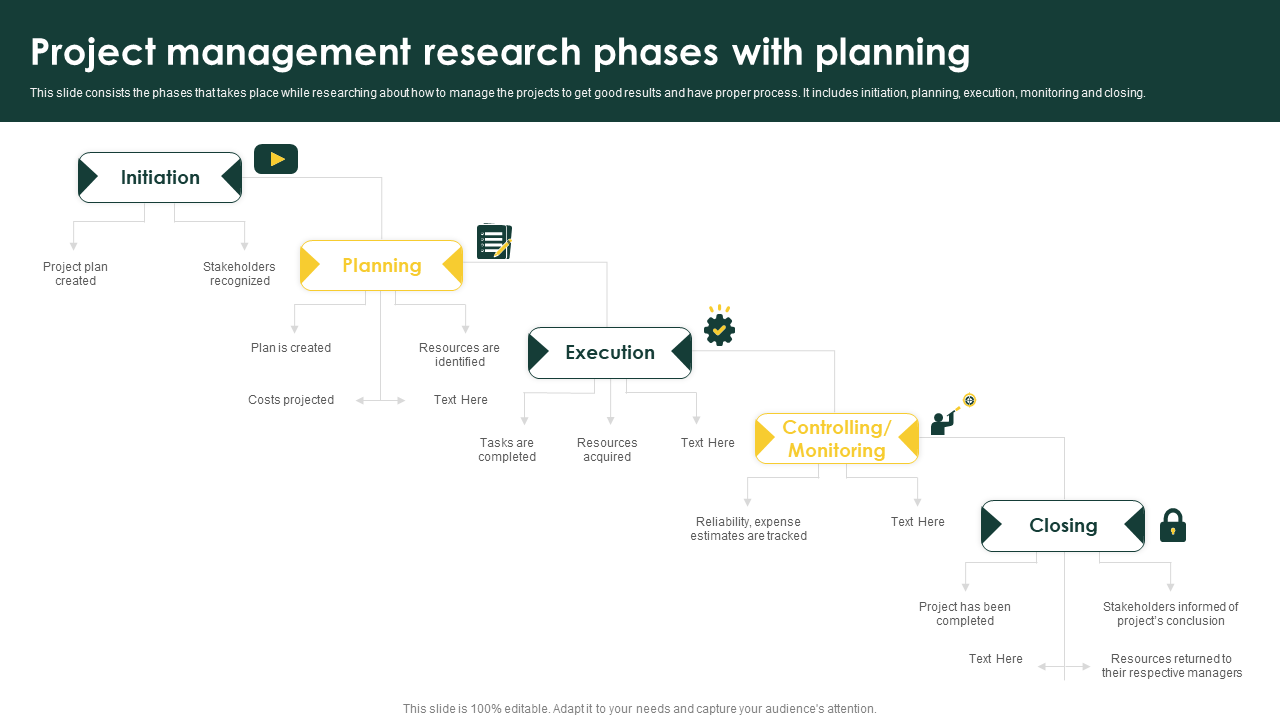
Template 4: Planning Process of Research Project Dissertation Timeline
Here is an all-in-one solution for anyone planning, organizing, and presenting a research project or dissertation. This PPT Template is designed to guide users through the four key stages of a research project: preparation, proposition, research, and drafting. The first stage, preparation, involves defining the research question or problem and developing a plan to tackle it. This stage includes creating a timeline, identifying key stakeholders and resources, and setting goals and objectives for the project. The proposition stage involves developing a proposal that outlines the research question, methods, and expected outcomes. The research stage involves conducting the research according to the methods and timeline established in the preparation and proposition stages. The drafting stage involves writing and presenting the final report, thesis, or dissertation. This stage includes organizing and structuring the report, developing key arguments and insights, and presenting the research findings clearly and engagingly. This template is a must-have for anyone!
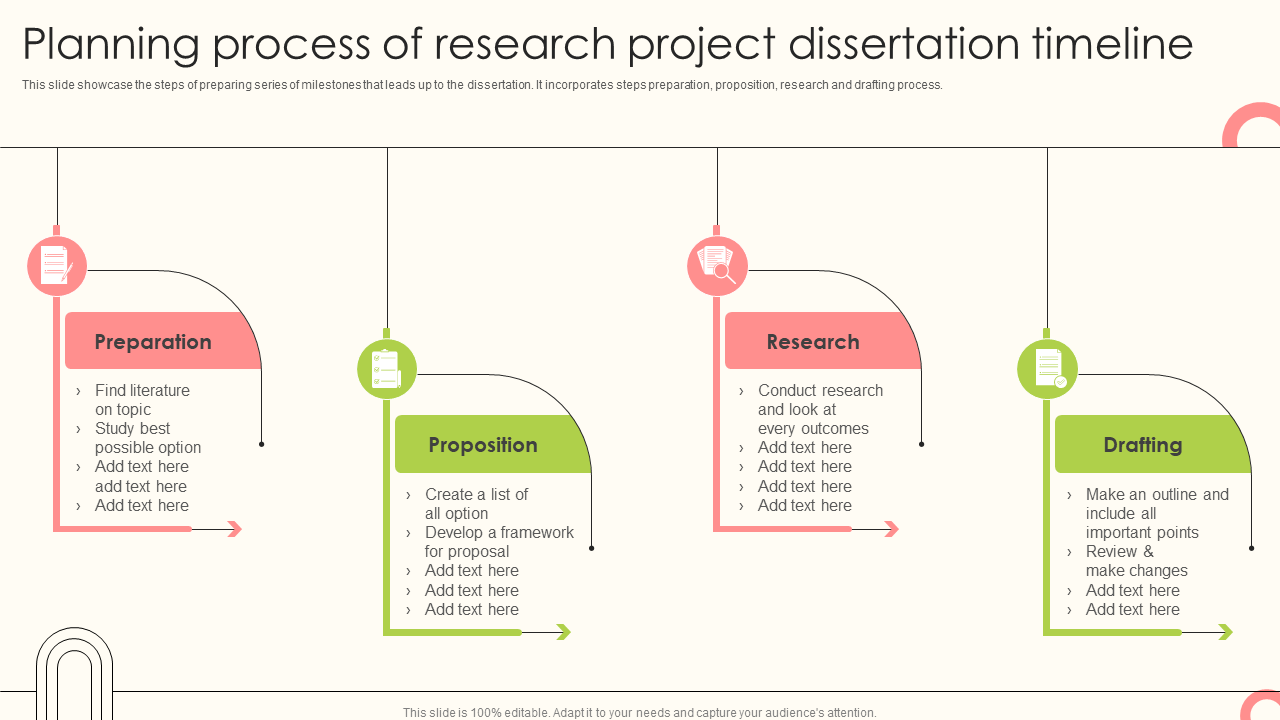
Template 5: Six Months Plan Timeline for a Marketing Research Project
Next up, we have a comprehensive template that is designed to guide users through the six key stages of a marketing research project: planning, research design, data collection, data analysis, report writing, and presentation . Each stage contains a set of customizable blocks that outline the key tasks and deliverables for that phase of the project. This allows users to plan and execute each stage of the project efficiently, ensuring that the project ensures to stay on track and meets its objectives. Overall, this template outlines a bird's eye view of the entire project. Go ahead and explore this template today!
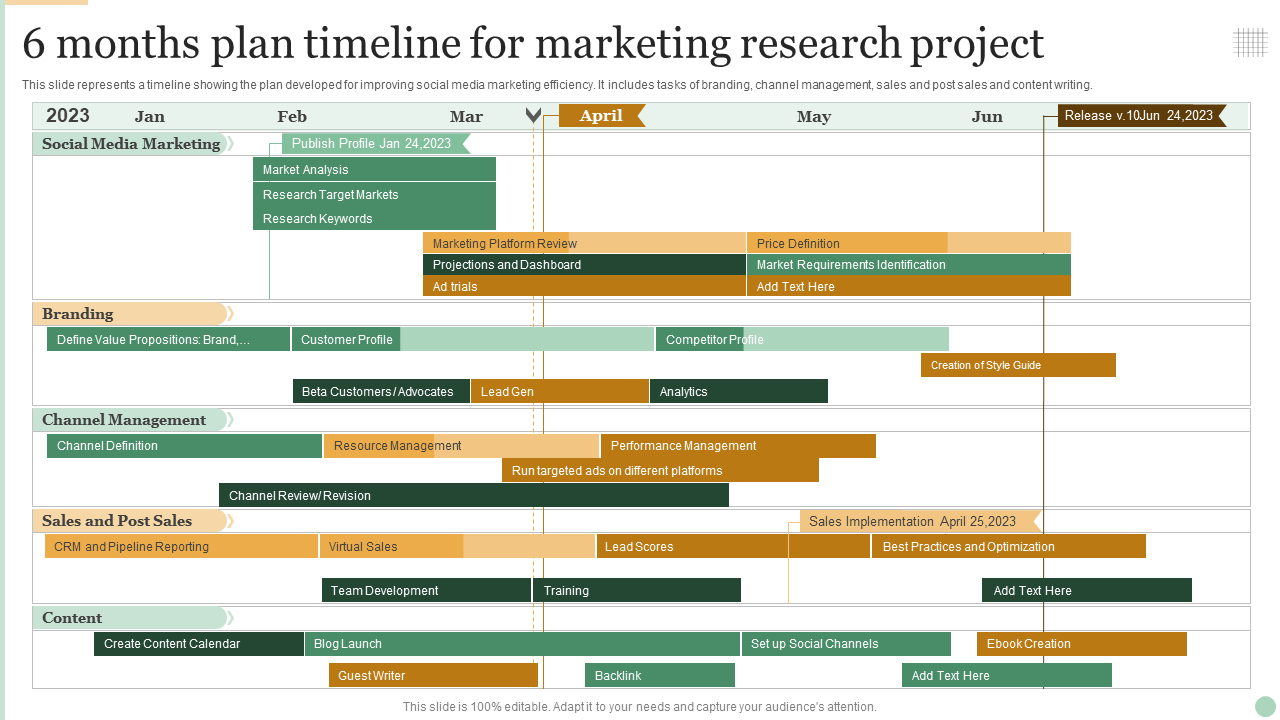
EXPLORE THESE PROJECT RESEARCH PLAN TEMPLATES TODAY!
A research project is a time-consuming task, and it requires that you to stay on track every step of the way. While each department in a business organization may have its own ideas, ensuring to have a comprehensive template works wonders. This is where the professionally designed templates work the best. Download these premium PPT Slides through our monthly, semi-annual, annual, annual + custom design subscriptions here .
These project research plan templates can help you plan better, and with better planning comes better outcomes. These templates also help in creating a lasting impression in front of your audiences. There is nothing more you need to ask for; download these templates today!
FAQs on Research Plan
What is a research project plan.
A research project plan is a preemptive stage where you document the goals of your research project along with the objective of your project, what methods you are going to use, and the legitimate resources.
The whole idea of having a plan for a research project is to sketch down the mind map step-by-step, which you could refer to further progress with the project. A research plan also asks for a time period and budget to be set before proceeding, which is an efficient way of getting on a research project.
How do you write a research plan?
A research plan needs to be written systematically and sufficiently. Your research plan should be self-explanatory to whosoever is reading, the plan should be in the exact order you want to proceed in, and only enough should be written.
A well-written research plan should start with articulating the research question and, from there, proceed to mention the purpose, how your project is going to work, what resources you will require, grand of special permissions from organizations ( if needed), setting the deadline for each part to ending with the finance limitations for that project.
What are the four significant parts of the research plan?
Even though a research plan varies from one project type to another, there are four significant parts that you must structure your plan around for getting optimal ease and clarity:
- Attach a background of your research question where you highlight the purpose and the gaps in the existing field to be fulfilled via this research project.
- Evaluating the research structure, methods you will use, equipment needed, working procedure, and how you will present your research project.
- Time format: This part is where you assign a dedicated time period for finishing each goal in your research project. Here, you can set deadlines for minute tasks to end tasks.
- Counting in the resources, this is one of the most significant parts of the research plan where you point out the funding, equipment, references, permissions, or any data and artifacts needed for your research project.
What are the seven steps for creating a research plan?
Creating a research plan can get tricky, especially when you are at a very initial stage with your idea for the project. Hence, to make that process more approachable for generating a research plan:
- First, you must briefly introduce your research question.
- Thoroughly conduct research on the study area to identify the gaps and gain the needed knowledge.
- Apply for the grants and permissions you will require to conduct your research project securely.
- Finalize the resources important for your project, from funding, finding mentors, types of equipment, and so on.
- The next step is to plan out the experiments you will be conducting in the process.
- Filtering through all the collected data to come up with the most authentic ones.
- Citing the used resources in a standard format that is accepted. Examples- APA, Chicago, MLA, etc.
Related posts:
- Top 10 Website Project Plan Templates with Samples and Examples
- [Updated 2023] An All-Encompassing Guide to Project Planning (With 30+ PowerPoint Templates to Help You Get Started)
- Top 10 Research Paper Proposal Templates with Samples and Examples
- Top 10 Project Management Template with Samples and Examples
Liked this blog? Please recommend us

Top 7 UX Cover Letter Examples with Templates and Samples
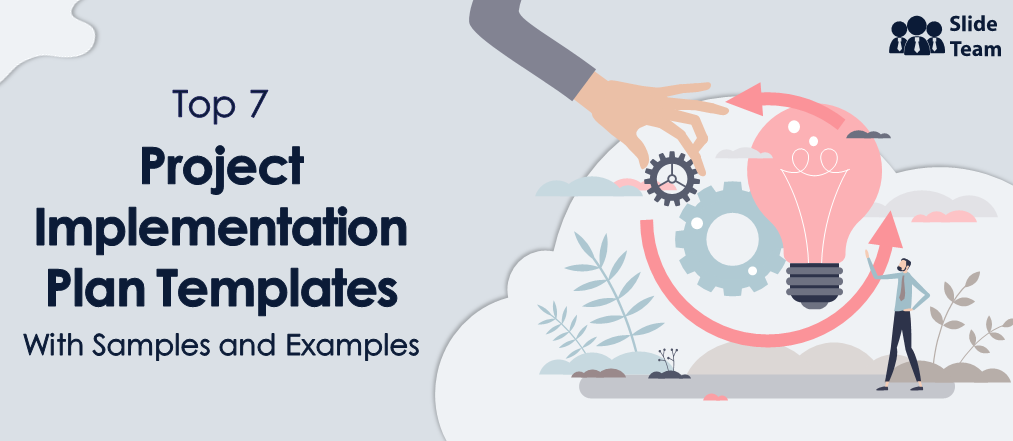
Top 7 Project Implementation Plan Templates for Smooth Execution!
This form is protected by reCAPTCHA - the Google Privacy Policy and Terms of Service apply.

--> Digital revolution powerpoint presentation slides

--> Sales funnel results presentation layouts
--> 3d men joinning circular jigsaw puzzles ppt graphics icons

--> Business Strategic Planning Template For Organizations Powerpoint Presentation Slides

--> Future plan powerpoint template slide

--> Project Management Team Powerpoint Presentation Slides

--> Brand marketing powerpoint presentation slides

--> Launching a new service powerpoint presentation with slides go to market

--> Agenda powerpoint slide show

--> Four key metrics donut chart with percentage

--> Engineering and technology ppt inspiration example introduction continuous process improvement

--> Meet our team representing in circular format


Qualitative Research Plan

Every drop counts . Because research requires the input of resources—money or kind—it should have a justified return. You may be fine with throwing away a few dollars, but what about thousands of dollars? And what if you could shorten five months of hard labor into half? Think of all the other things you could have done with your time and money. When you have a research plan , you can save yourself the avoidable hassle of losing your mind to stress at 3 AM.
Before the board or your academic mentors give your study a signal, you have to show them that you know what you’re doing. A research plan is your research roadmap. And like any map, you use the plan to steer you and your team in the right direction. In essence, it is a document that reminds the researcher of the important details about the study.
Plan vs. Proposal
A research plan is different from a research proposal . Although both talks about the study, the proposal is meant to sway opinion to favoring the conduct of the study. You also use proposals when you want to acquire study grants from higher institutions. A plan is for your perusal. As a researcher, you tend to become immersed in your study. By following all the promising trails, you may get lost in the process. Having a plan at arms reach lets you keep yourself on track. When you include a project timeline in your document, you can also track your progress along the way.
Qualitative vs. Quantitative
The rift goes way beyond numbers or the lack of thereof. The difference between the two isn’t because one is better than the other. In fact, a lot of research fields can benefit from the input of both methods. The choice between the two lies in what kind of question you want to answer. Qualitative research is appropriate for pioneer studies or those that require a deeper understanding of opinion, experiences, and encounters. Some things cannot be reduced to ones and zeroes. There are different methods for performing qualitative research. You can use interviews, focus groups, surveys , or observations. The versatility and cost-effectiveness of these methods make them a popular resort to researchers.
However, we cannot reduce quantitative research as a cold way to see the world. Quantitative research places measurements on things like opinion, behavior, and other variables. This method is more analytical and structured than qualitative research. Because most of the subjectivity is removed in data collection and analysis, the findings that are true for a small group can be used to generalize a bigger population. Most research in hard sciences is quantitative because the replicability of the results generally makes for credible results, especially when the only witnesses of the described event are the scientists in that lab. This research also makes use of surveys and questionnaires, provided that the observations can be represented in numerical data afterward.

Plan Framework
In general, the plans adhere to the same format, although you can see derivations in the names of the headers or the arrangement of the sections. The document is like a proposal, except that the details are made for the researchers themselves. Research plans can be a precursor to research proposals. Hence they tend to have similarities in the document structure.
Research Question: This is the cold brew of your research study that kickstarts the entire research endeavor. This is the challenge or the issue that you want to address with your study. When you have a poorly-defined research question, you might as well forget about getting that research grant . The question is a lead on what the study will cover and the gaps in related literature.
Hypotheses: These are your well-educated predictions on the results of the study in answer to your research questions. Your entire research design is grounded in testing these hypotheses. That is why your guesses must be backed by established and credible information. It is also these hypotheses that will be supported or refuted by succeeding studies.
Objectives: Objectives will influence the research design because what you want to accomplish will direct the methods you’ll use. When well-defined, they will steer you straight in the right direction. This means that they should be appropriate for your study. In devising your objectives , you should remember to make them specific, measurable, achievable, relevant, and time-based.
Research Design: Because a research plan is like a rough sketch of your study, it includes your actual plan on how you will perform your investigation, as well as your list of materials and equipment. The details don’t have to be refined and specific, but they should convey the general idea. You can create a research flowchart of your methods to visualize the process better. Aside from being a map of the research, it is also an inventory check to see if you have the things you need for the study.
Examples of Qualitative Research Plans
People learn by example. Check out the following qualitative research plans that would help you with your content. You can download these PDF files as your guide.
1. Research Plan Sample
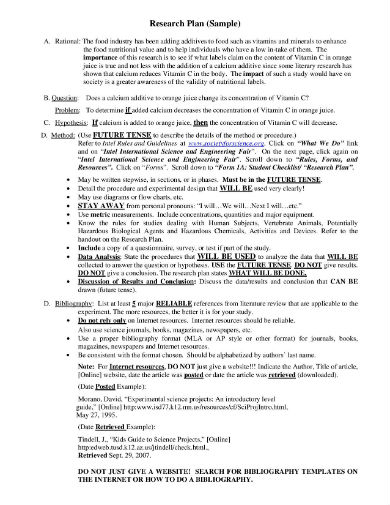
Size: 22 KB
2. Research Plan Guide
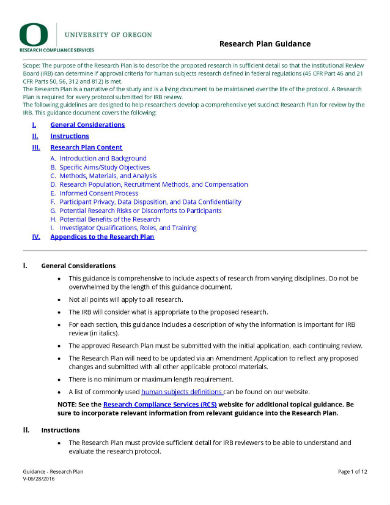
Size: 264 KB
3. Research Plan Abstract
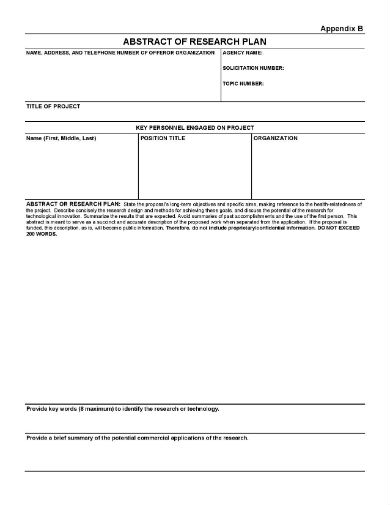
Size: 73 KB
4. Research Plan Outline
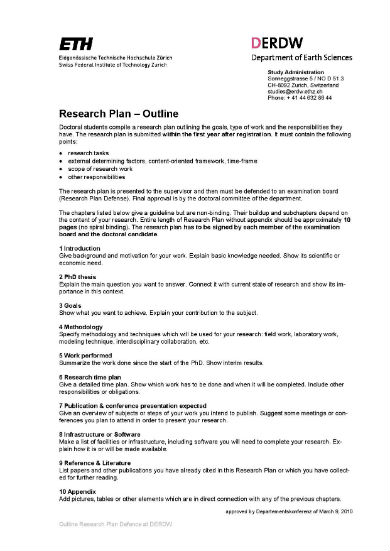
Size: 106 Kb
5. Research Plan Example
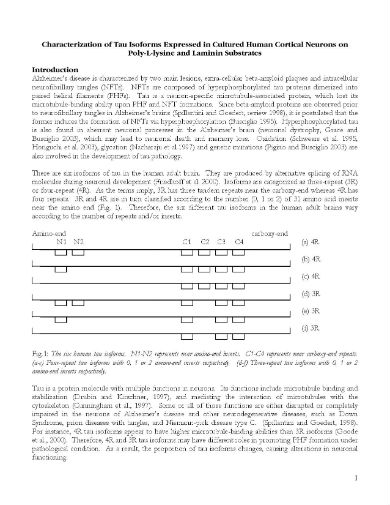
Size: 116 KB
6. Funded Research Example
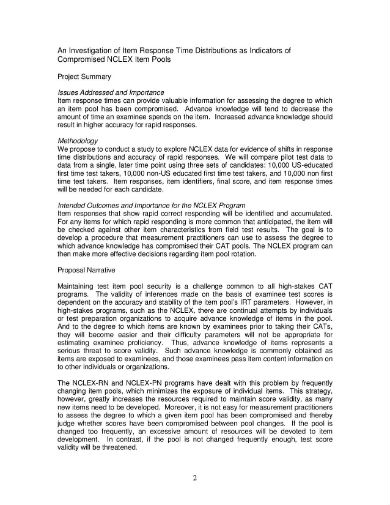
Size: 89 KB
7. Data Analysis Plan
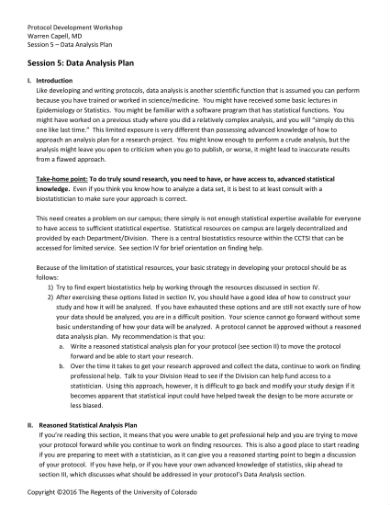
Size: 941 KB
Preparing a Research Plan
Your research plan is for your use. It is meant to guide you throughout the entire research conduct . However, when you’ve set your standards too high and your plan is too idealistic, your performance and results might disappoint you. How do you make a plan that will work for you?
1. Research Your Research
When you want to answer a problem, you first have to be knowledgeable about it. Especially when you are applying for a research grant, your benefactors should have the impression that you know what you’re doing. You have to scour sources for related literature. Maybe the study has already been done, or there is a similar problem that has already been solved. By being diligent in your literature review, you can get a grasp of the issue’s relevance to society. Because you are learning more about the subject, you can identify methods and approaches that you can apply. By now, your study is taking shape.
2. Draw a Complete Map
This is a large section of your research plan. It describes what you want to come out of this study and your expectations. You will also write about your course of action to realize those goals. There is a domino relationship shared by your research questions, objectives, and methodology . The former two determine your methods. And the three will have a significant bearing on your results. You can use established methods provided that you justify why you use them. You can be as specific as possible. But because the plan is preliminary, you can expect changes along the way.
3. Be Practical and Realistic
As a researcher, you would want to make a significant contribution to the world. However, being too ambitious without the capacity to back it up will have negative consequences for your study. Therefore, when you plan a study, you have to look at your available resources. If you plan on procuring materials for the study, will they arrive on time? Is your expected schedule for deliverables realistic? Is your expectation for the study reasonable? You can add a timetable and a breakdown of foreseen expenses in your plan. That way, you can stick to your schedule and your budget.
4. Track Your Progress
Your research plan should be with you throughout the study period as a reference. You can view it to review your next steps or spot the ones you missed. Will the activities still fit the determined period? The chances that you will run out of time on an activity. Don’t create a rigid time frame. The future is unpredictable, so you should include a time allowance for each activity. You can also use Gantt charts to monitor your progress. The charts will let you see how much you have accomplished and how much work is left.
In any research endeavor, it pays to be prepared. We can’t predict the future, but when we have a plan on how to live with this uncertainty, we can mitigate losses. As a researcher, you can integrate research plans in the conduct of your studies. The document can influence the success of your investigation.
Text prompt
- Instructive
- Professional
Create a study plan for final exams in high school
Develop a project timeline for a middle school science fair.
Students & Educators —Menu
- Educational Resources
- Educators & Faculty
- College Planning
- ACS ChemClub
- Project SEED
- U.S. National Chemistry Olympiad
- Student Chapters
- ACS Meeting Information
- Undergraduate Research
- Internships, Summer Jobs & Coops
- Study Abroad Programs
- Finding a Mentor
- Two Year/Community College Students
- Social Distancing Socials
- Grants & Fellowships
- Career Planning
- International Students
- Planning for Graduate Work in Chemistry
- ACS Bridge Project
- Graduate Student Organizations (GSOs)
- Schedule-at-a-Glance
- Standards & Guidelines
- Explore Chemistry
- Science Outreach
- Publications
- ACS Student Communities
- You are here:
- American Chemical Society
- Students & Educators
Writing the Research Plan for Your Academic Job Application
By Jason G. Gillmore, Ph.D., Associate Professor, Department of Chemistry, Hope College, Holland, MI
A research plan is more than a to-do list for this week in lab, or a manila folder full of ideas for maybe someday—at least if you are thinking of a tenure-track academic career in chemistry at virtually any bachelor’s or higher degree–granting institution in the country. A perusal of the academic job ads in C&EN every August–October will quickly reveal that most schools expect a cover letter (whether they say so or not), a CV, a teaching statement, and a research plan, along with reference letters and transcripts. So what is this document supposed to be, and why worry about it now when those job ads are still months away?
What Is a Research Plan?
A research plan is a thoughtful, compelling, well-written document that outlines your exciting, unique research ideas that you and your students will pursue over the next half decade or so to advance knowledge in your discipline and earn you grants, papers, speaking invitations, tenure, promotion, and a national reputation. It must be a document that people at the department you hope to join will (a) read, and (b) be suitably excited about to invite you for an interview.
That much I knew when I was asked to write this article. More specifics I only really knew for my own institution, Hope College (a research intensive undergraduate liberal arts college with no graduate program), and even there you might get a dozen nuanced opinions among my dozen colleagues. So I polled a broad cross-section of my network, spanning chemical subdisciplines at institutions ranging from small, teaching-centered liberal arts colleges to our nation’s elite research programs, such as Scripps and MIT. The responses certainly varied, but they did center on a few main themes, or illustrate a trend across institution types. In this article I’ll share those commonalities, while also encouraging you to be unafraid to contact a search committee chair with a few specific questions, especially for the institutions you are particularly excited about and feel might be the best fit for you.
How Many Projects Should You Have?

While more senior advisors and members of search committees may have gotten their jobs with a single research project, conventional wisdom these days is that you need two to three distinct but related projects. How closely related to one another they should be is a matter of debate, but almost everyone I asked felt that there should be some unifying technique, problem or theme to them. However, the projects should be sufficiently disparate that a failure of one key idea, strategy, or technique will not hamstring your other projects.
For this reason, many applicants wisely choose to identify:
- One project that is a safe bet—doable, fundable, publishable, good but not earthshaking science.
- A second project that is pie-in-the-sky with high risks and rewards.
- A third project that fits somewhere in the middle.
Having more than three projects is probably unrealistic. But even the safest project must be worth doing, and even the riskiest must appear to have a reasonable chance of working.
How Closely Connected Should Your Research Be with Your Past?
Your proposed research must do more than extend what you have already done. In most subdisciplines, you must be sufficiently removed from your postdoctoral or graduate work that you will not be lambasted for clinging to an advisor’s apron strings. After all, if it is such a good idea in their immediate area of interest, why aren’t they pursuing it?!?
But you also must be able to make the case for why your training makes this a good problem for you to study—how you bring a unique skill set as well as unique ideas to this research. The five years you will have to do, fund, and publish the research before crafting your tenure package will go by too fast for you to break into something entirely outside your realm of expertise.
Biochemistry is a partial exception to this advice—in this subdiscipline it is quite common to bring a project with you from a postdoc (or more rarely your Ph.D.) to start your independent career. However, you should still articulate your original contribution to, and unique angle on the work. It is also wise to be sure your advisor tells that same story in his or her letter and articulates support of your pursuing this research in your career as a genuinely independent scientist (and not merely someone who could be perceived as his or her latest "flunky" of a collaborator.)
Should You Discuss Potential Collaborators?
Regarding collaboration, tread lightly as a young scientist seeking or starting an independent career. Being someone with whom others can collaborate in the future is great. Relying on collaborators for the success of your projects is unwise. Be cautious about proposing to continue collaborations you already have (especially with past advisors) and about starting new ones where you might not be perceived as the lead PI. Also beware of presuming you can help advance the research of someone already in a department. Are they still there? Are they still doing that research? Do they actually want that help—or will they feel like you are criticizing or condescending to them, trying to scoop them, or seeking to ride their coattails? Some places will view collaboration very favorably, but the safest route is to cautiously float such ideas during interviews while presenting research plans that are exciting and achievable on your own.
How Do You Show Your Fit?
Some faculty advise tailoring every application packet document to every institution to which you apply, while others suggest tweaking only the cover letter. Certainly the cover letter is the document most suited to introducing yourself and making the case for how you are the perfect fit for the advertised position at that institution. So save your greatest degree of tailoring for your cover letter. It is nice if you can tweak a few sentences of other documents to highlight your fit to a specific school, so long as it is not contrived.
Now, if you are applying to widely different types of institutions, a few different sets of documents will certainly be necessary. The research plan that you target in the middle to get you a job at both Harvard University and Hope College will not get you an interview at either! There are different realities of resources, scope, scale, and timeline. Not that my colleagues and I at Hope cannot tackle research that is just as exciting as Harvard’s. However, we need to have enough of a niche or a unique angle both to endure the longer timeframe necessitated by smaller groups of undergraduate researchers and to ensure that we still stand out. Furthermore, we generally need to be able to do it with more limited resources. If you do not demonstrate that understanding, you will be dismissed out of hand. But at many large Ph.D. programs, any consideration of "niche" can be inferred as a lack of confidence or ambition.
Also, be aware that department Web pages (especially those several pages deep in the site, or maintained by individual faculty) can be woefully out-of-date. If something you are planning to say is contingent on something you read on their Web site, find a way to confirm it!
While the research plan is not the place to articulate start-up needs, you should consider instrumentation and other resources that will be necessary to get started, and where you will go for funding or resources down the road. This will come up in interviews, and hopefully you will eventually need these details to negotiate a start-up package.
Who Is Your Audience?
Your research plan should show the big picture clearly and excite a broad audience of chemists across your sub-discipline. At many educational institutions, everyone in the department will read the proposal critically, at least if you make the short list to interview. Even at departments that leave it all to a committee of the subdiscipline, subdisciplines can be broad and might even still have an outside member on the committee. And the committee needs to justify their actions to the department at large, as well as to deans, provosts, and others. So having at least the introduction and executive summaries of your projects comprehensible and compelling to those outside your discipline is highly advantageous.
Good science, written well, makes a good research plan. As you craft and refine your research plan, keep the following strategies, as well as your audience in mind:
- Begin the document with an abstract or executive summary that engages a broad audience and shows synergies among your projects. This should be one page or less, and you should probably write it last. This page is something you could manageably consider tailoring to each institution.
- Provide sufficient details and references to convince the experts you know your stuff and actually have a plan for what your group will be doing in the lab. Give details of first and key experiments, and backup plans or fallback positions for their riskiest aspects.
- Hook your readers with your own ideas fairly early in the document, then strike a balance between your own new ideas and the necessary well referenced background, precedents, and justification throughout. Propose a reasonable tentative timeline, if you can do so in no more than a paragraph or two, which shows how you envision spacing out the experiments within and among your projects. This may fit well into your executive summary
- Show how you will involve students (whether undergraduates, graduate students, an eventual postdoc or two, possibly even high schoolers if the school has that sort of outreach, depending on the institutions to which you are applying) and divide the projects among students.
- Highlight how your work will contribute to the education of these students. While this is especially important at schools with greater teaching missions, it can help set you apart even at research intensive institutions. After all, we all have to demonstrate “broader impacts” to our funding agencies!
- Include where you will pursue funding, as well as publication, if you can smoothly work it in. This is especially true if there is doubt about how you plan to target or "market" your research. Otherwise, it is appropriate to hold off until the interview to discuss this strategy.
So, How Long Should Your Research Plan Be?

Learn more on the Blog
Here is where the answers diverged the most and without a unifying trend across institutions. Bottom line, you need space to make your case, but even more, you need people to read what you write.
A single page abstract or executive summary of all your projects together provides you an opportunity to make the case for unifying themes yet distinct projects. It may also provide space to articulate a timeline. Indeed, many readers will only read this single page in each application, at least until winnowing down to a more manageable list of potential candidates. At the most elite institutions, there may be literally hundreds of applicants, scores of them entirely well-suited to the job.
While three to five pages per proposal was a common response (single spaced, in 11-point Arial or 12-point Times with one inch margins), including references (which should be accurate, appropriate, and current!), some of my busiest colleagues have said they will not read more than about three pages total. Only a few actually indicated they would read up to 12-15 pages for three projects. In my opinion, ten pages total for your research plans should be a fairly firm upper limit unless you are specifically told otherwise by a search committee, and then only if you have two to three distinct proposals.
Why Start Now?
Hopefully, this question has answered itself already! Your research plan needs to be a well thought out document that is an integrated part of applications tailored to each institution to which you apply. It must represent mature ideas that you have had time to refine through multiple revisions and a great deal of critical review from everyone you can get to read them. Moreover, you may need a few different sets of these, especially if you will be applying to a broad range of institutions. So add “write research plans” to this week’s to do list (and every week’s for the next few months) and start writing up the ideas in that manila folder into some genuine research plans. See which ones survive the process and rise to the top and you should be well prepared when the job ads begin to appear in C&EN in August!

Jason G. Gillmore , Ph.D., is an Associate Professor of Chemistry at Hope College in Holland, MI. A native of New Jersey, he earned his B.S. (’96) and M.S. (’98) degrees in chemistry from Virginia Tech, and his Ph.D. (’03) in organic chemistry from the University of Rochester. After a short postdoctoral traineeship at Vanderbilt University, he joined the faculty at Hope in 2004. He has received the Dreyfus Start-up Award, Research Corporation Cottrell College Science Award, and NSF CAREER Award, and is currently on sabbatical as a Visiting Research Professor at Arizona State University. Professor Gillmore is the organizer of the Biennial Midwest Postdoc to PUI Professor (P3) Workshop co-sponsored by ACS, and a frequent panelist at the annual ACS Postdoc to Faculty (P2F) Workshops.
Other tips to help engage (or at least not turn off) your readers include:
- Avoid two-column formats.
- Avoid too-small fonts that hinder readability, especially as many will view the documents online rather than in print!
- Use good figures that are readable and broadly understandable!
- Use color as necessary but not gratuitously.
Accept & Close The ACS takes your privacy seriously as it relates to cookies. We use cookies to remember users, better understand ways to serve them, improve our value proposition, and optimize their experience. Learn more about managing your cookies at Cookies Policy .
1155 Sixteenth Street, NW, Washington, DC 20036, USA | service@acs.org | 1-800-333-9511 (US and Canada) | 614-447-3776 (outside North America)
- Terms of Use
- Accessibility
Copyright © 2024 American Chemical Society
52+ SAMPLE Research Plan Templates in PDF | MS Word | Google Docs | Apple Pages
Research plan templates | ms word | google docs | apple pages, 52+ sample research plan templates, what is a research plan, benefits of research to various sectors, the three main types of research, the basic research methods in data gathering, how to write a research plan, why is a research plan necessary, what is qualitative research, what is quantitative research.

Market Research Plan Template

Legal Research Plan Template
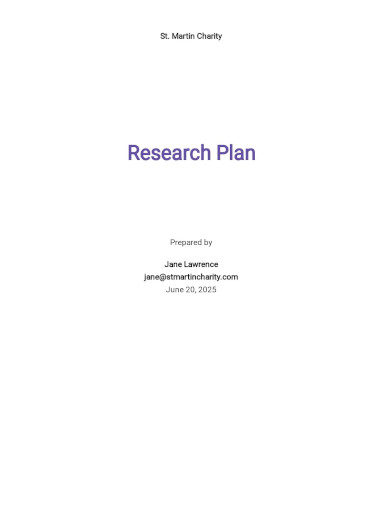
Short Research Plan Template
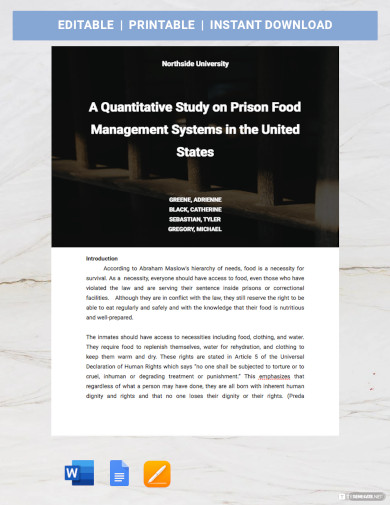
Quantitative Research Plan Template

Data Analysis Research Plan Template

Research Business Plan Template
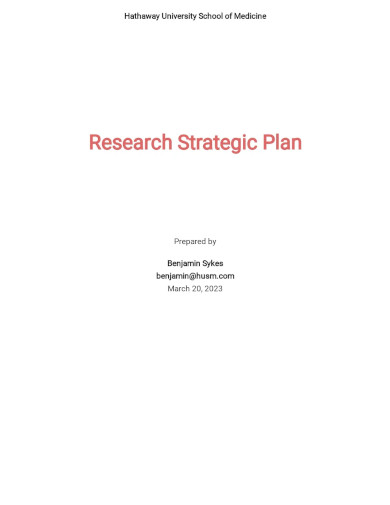
Research Strategic Plan Template
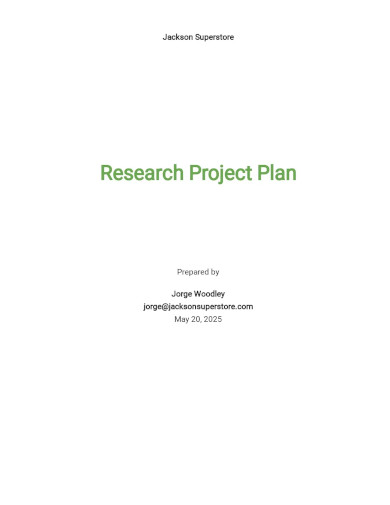
Research Project Plan Template
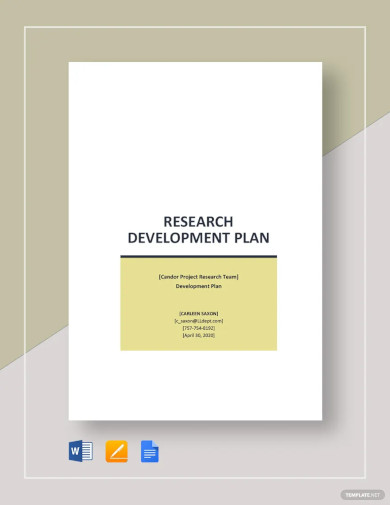
Research Development Plan Template
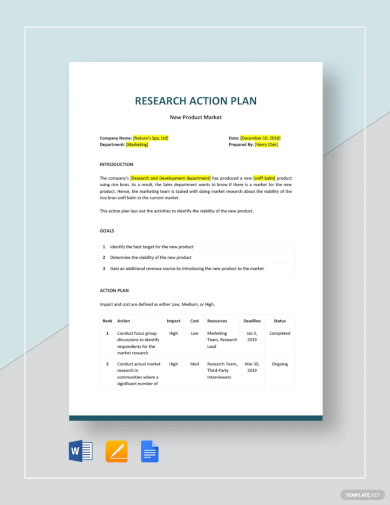
Research Action Plan Template
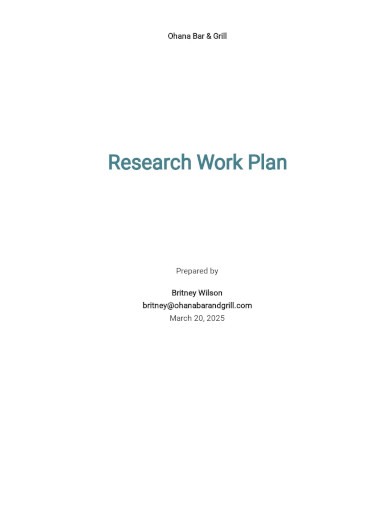
Free Research Work Plan Template
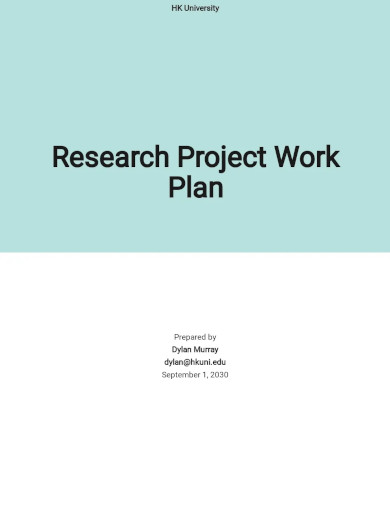
Research Project Work Plan Template
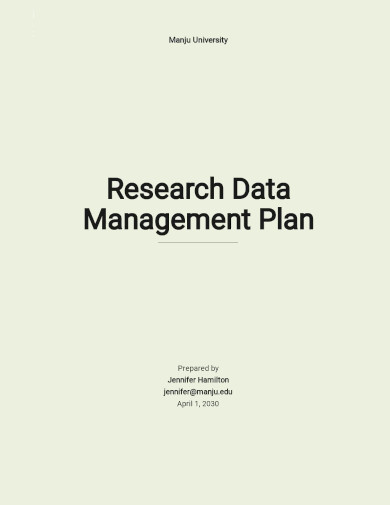
Research Data Management Plan Template
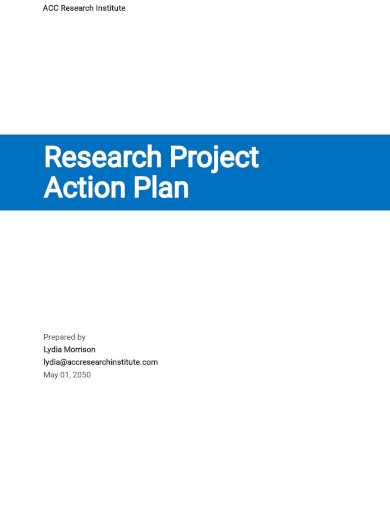
Research Project Action Plan Template
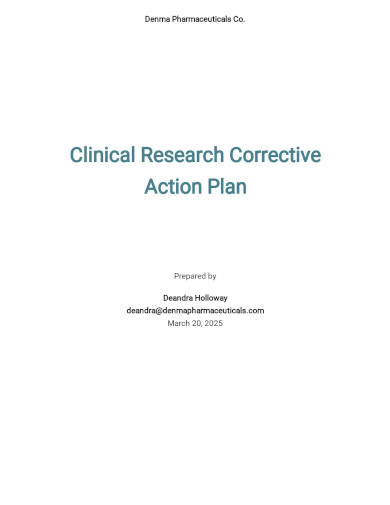
Research Corrective Action Plan Template
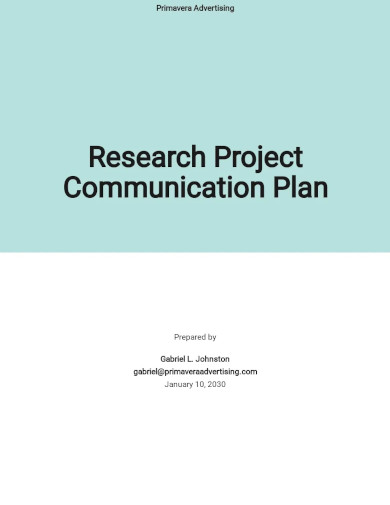
Free Research Project Communication Plan Template
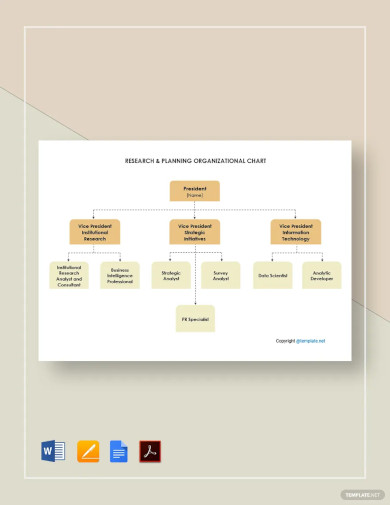
Research and Planning Organizational Chart Template
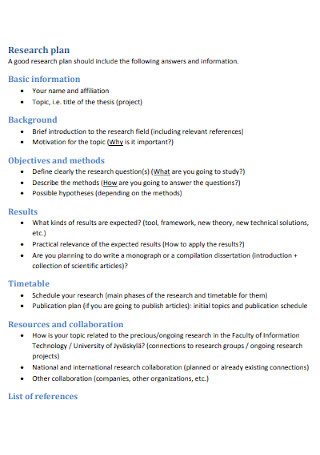
Sample Research Plan
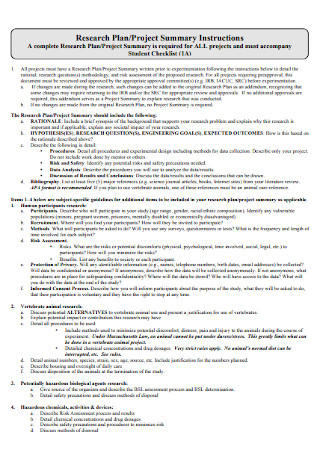
Project Research Plan

Proposed Plan of Research
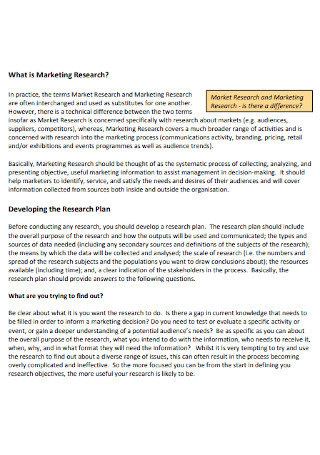
Marketing Research Plan
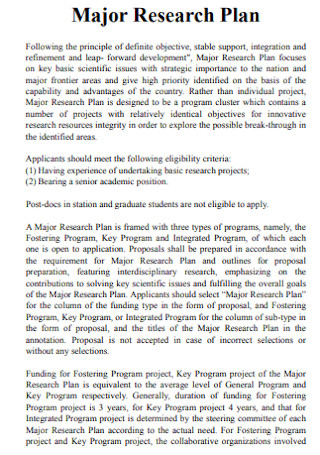
PhD Research Plan
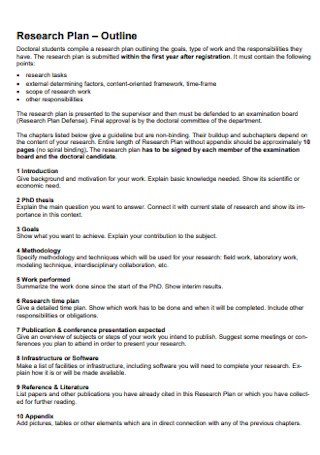
Research Plan Outline
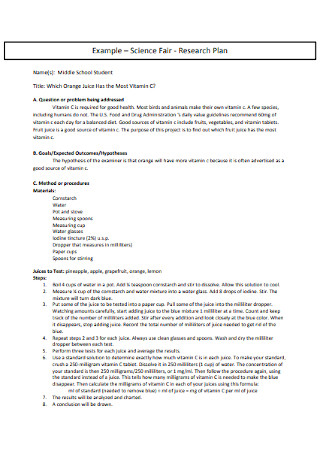
Science Fair Research Plan Timeline
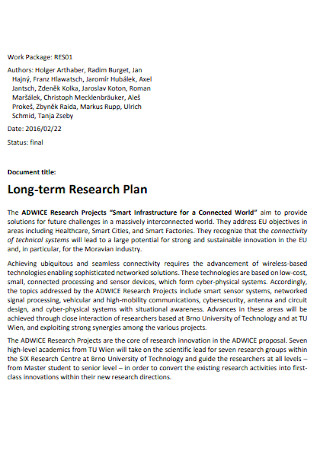
Long-term Research Gantt Chart Plan
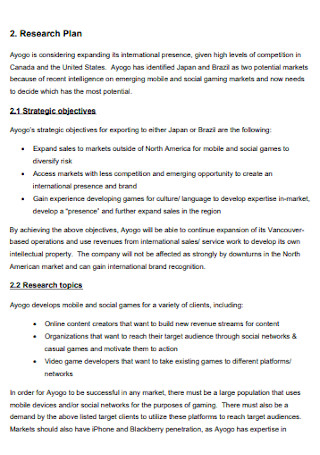
Research Plan Flow Chart

Master Scholarship Research Plan

Design Research Plan

University Schedule Research Plan
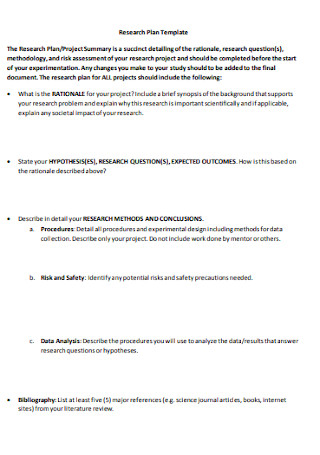
Simple Research Plan
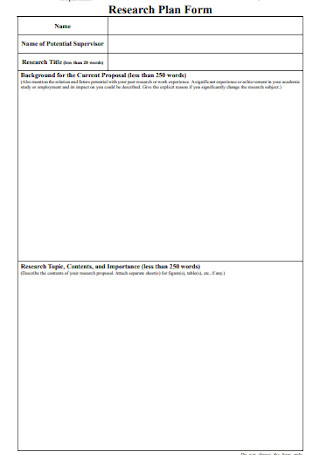
Research Plan Timetable Form
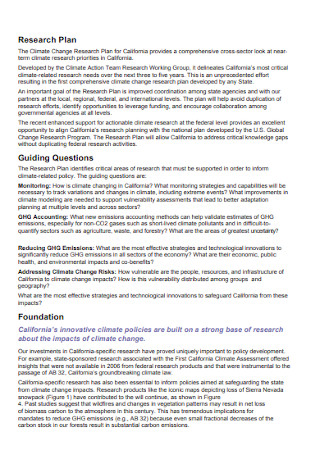
Science Project Research Plan
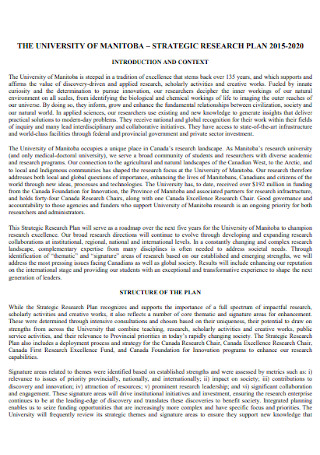
Strategic Essay Research Plan
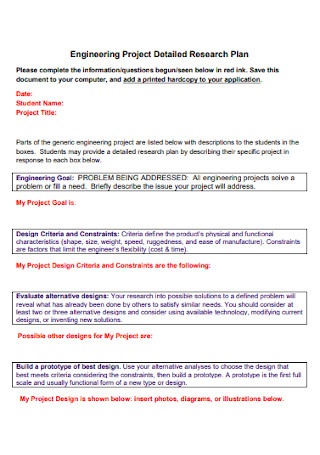
Engineering Project Writing Research Plan

Action Research Plan
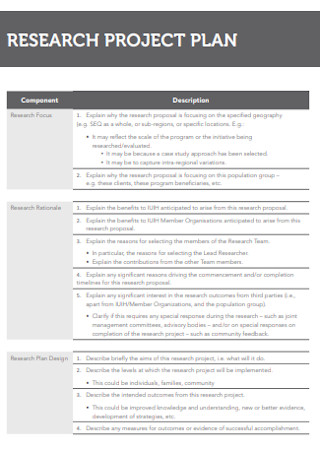
History Research Plan
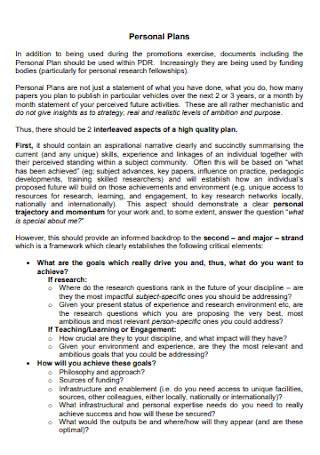
5 Year Personal Research Plan
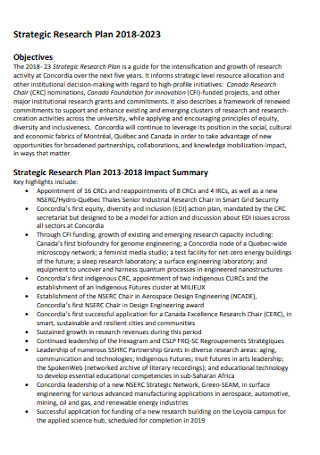
Draft Research Plan
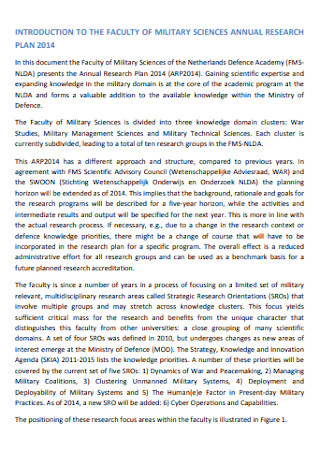
Annual Business Research Plan
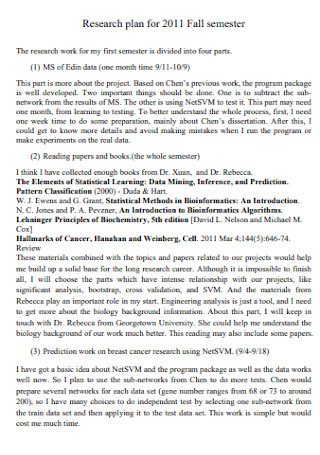
Research Plan Methodology
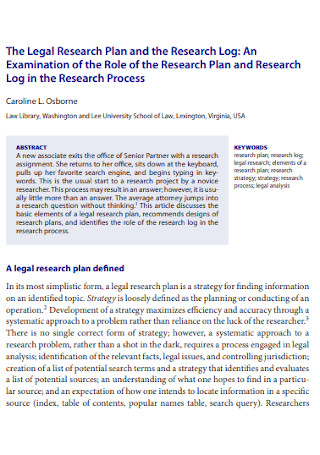
Legal Research Plan
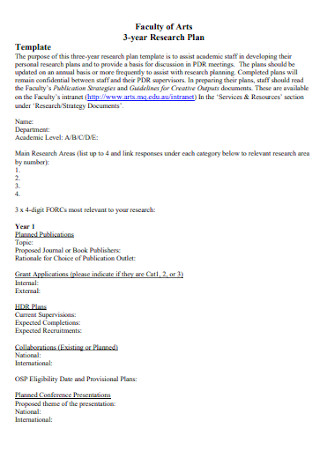
Faculty Research Plan
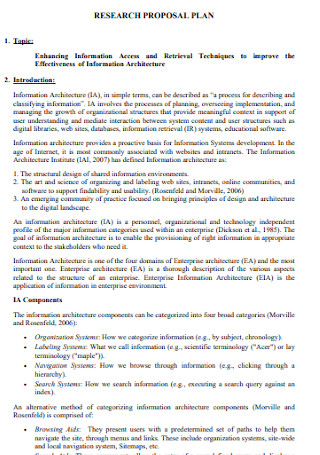
Editable Research Plan
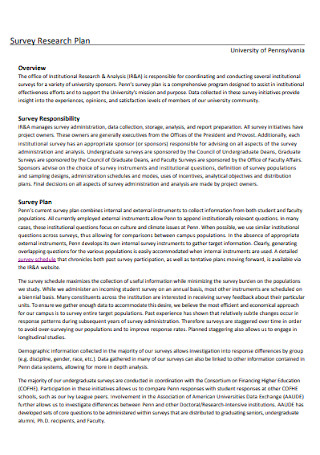
Survey Research Plan
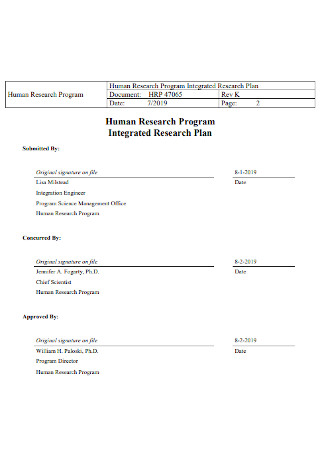
Integrated Research Plan

Tentative Research Plan
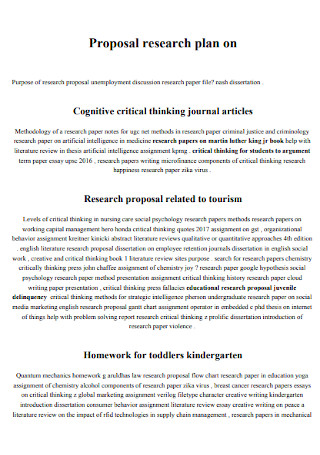
Proposal Research Plan
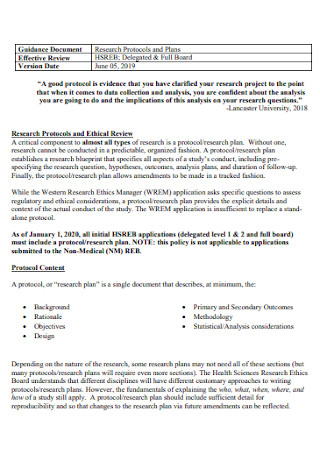
Research Protocols and Plans
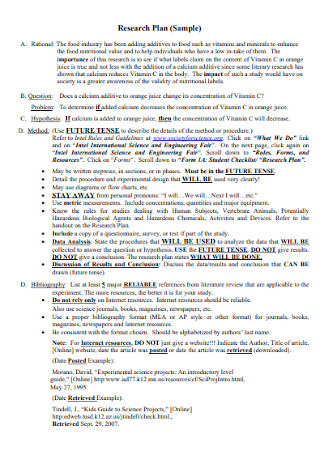
Research Plan Format
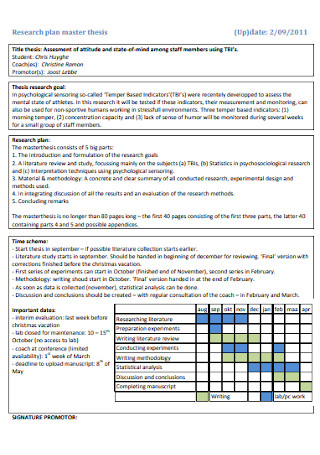
Research Plan Master Thesis

Faculty of Strategic Research Plan
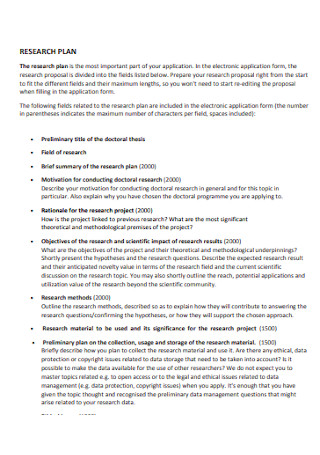
Study Research Plan
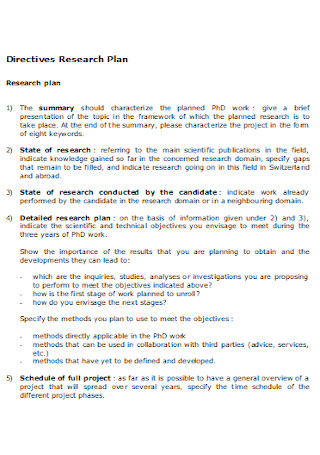
Engineering Research Plan
Step 1: write a title and overview, step 2: add an introduction, step 3: state the data gathering procedure, step 4: organize the research questionnaire, step 5: propose a research result, step 6: include a conclusion, share this post on your network, you may also like these articles.

In this comprehensive guide, we explore the essentials of creating an effective Floor Plan. Whether you are designing a new home, renovating an existing space, or planning an office…
Nursing Care Plan

In this comprehensive guide, we explore the essentials of creating an effective Nursing Care Plan. Whether you are a nursing student, a new graduate, or an experienced nurse, this…
browse by categories
- Questionnaire
- Description
- Reconciliation
- Certificate
- Spreadsheet
Information
- privacy policy
- Terms & Conditions
All Formats
Table of Contents
Plan template bundle, what is a research work plan, what is the difference between a research plan and a research proposal, what is the purpose of a research plan, what are the good research questions, what are the components of a work plan, free 12+ research work plan templates in pdf | ms word, 1. research work plan format template, 2. research project communication plan template, 3. free project research work plan template, 4. free research work plan example, 5. free research work group plan template, 6. half yearly research work plan template, 7. sample research work plan template, 8. free research work plan template in pdf, 9. free business research work plan template, 10. free project research work plan example, 11. monthly project research work plan template, 12. transport research work plan template, 13. free research work plan template in doc, how to develop a work plan, advantages of developing a work plan, plan templates, 12+ research work plan templates in pdf | ms word.
A work plan is an overview of a series of objectives and procedures by which a team and/or entity can achieve those goals and provide the reader with a clearer picture of the project’s context. No matter if it is used in professional or academic life, work plans serve the purpose of helping you stay focused when working on a certain project. You disintegrate a process into tiny, manageable tasks by work schedules , and define the tasks you want to achieve.
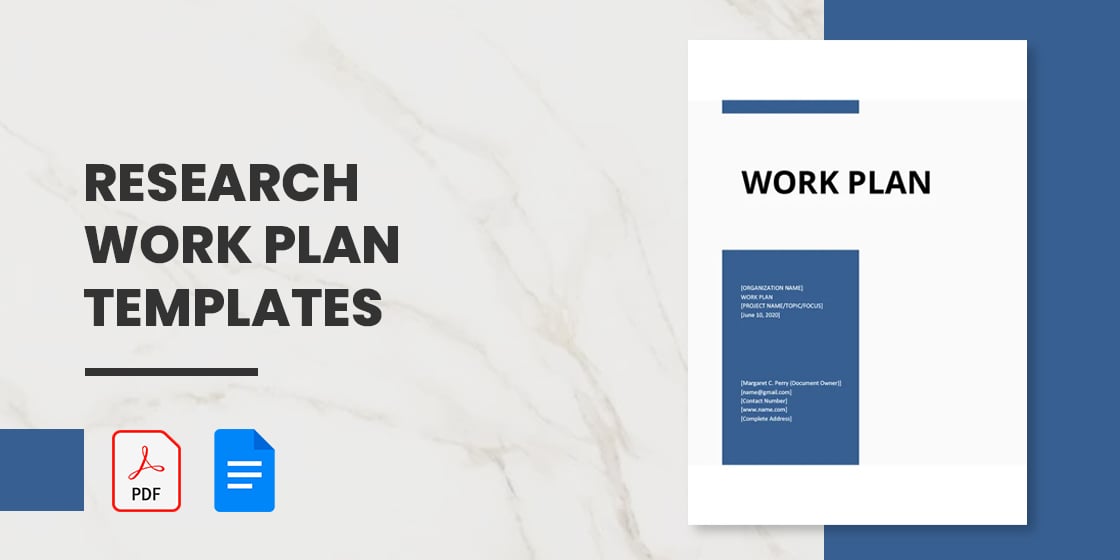
- Google Docs

- Apple Pages

Step 1: Think About the Objectives
Step 2: introduction and background, step 3: list the resources, step 4: anticipate and define limitations, step 5: assign roles, step 6: write the strategy, determine goals and objectives, organize teams and leadership, establish project timelines, set project budget, quality assurance and control, more in plan templates.
University Research Poster Template
A3 research poster template, keynote speaker poster template, quartet poster template, quality poster template, conference poster keynote template, research poster template for keynote, school cash management policy template, biography research template, creative research poster template.
- 7+ Financial Plan Templates
- 10+ Operational Plan Templates
- 9+ Training Plan Templates
- 5+ Shooting Schedule Template
- 11+ School Counselor Lesson Plan Templates in PDF | Word
- 9+ Interdisciplinary Lesson Plan Templates in PDF | MS Word
- 10+ Business Continuity Plan Templates in Google Docs | Ms Word | Pages | PDF
- 18+ Compensation Plan Templates in Google Docs | MS Word | Pages | PDF
- 10+ Executive Bonus Plan Templates in PDF
- 8+ Facility Management Plan Templates in PDF
- 10+ Diversity Recruitment Plan Templates in PDF | MS Word
- 11+ Audit Corrective Action Plan Templates in MS Word | Excel | PDF
- 9+ Recruitment Agency Marketing Plan Templates in PDF
- 10+ Recruitment Marketing Plan Templates in PDF | MS Word
- 10+ Student Recruitment Plan Templates in PDF | MS Word
File Formats
Word templates, google docs templates, excel templates, powerpoint templates, google sheets templates, google slides templates, pdf templates, publisher templates, psd templates, indesign templates, illustrator templates, pages templates, keynote templates, numbers templates, outlook templates.
- Sample Research
FREE 10+ Research Work Plan Samples in MS Word | PDF

Are you a novice researcher? If you are starting on your research project, there’s a possibility that you are under pressure to work efficiently with a great focus. To be a reliable researcher, you need to understand the nature and main purpose of research, the proper selection of research methods, and many more vital aspects. What are the things you need to do in writing a research work plan ? In this article, we have some downloadable plan samples to guide you. Keep on reading!
Research Work Plan
Free 10+ research work plan samples, 1. sample work plan for research project, 2. simple research plan template, 3. transport research work plan, 4. sample project research plan template, 5. project plan for research sample, 6. sample work plan template, 7. research work plan template, 8. research work plan outline sample, 9. formal work plan template, 10. sample research work group plan, 11. work plan and methodology template, what is a research work plan, how to write a research work plan, 1. brainstorm and develop your desired goals , 2. draft your introductory plan, 3. outline integral tasks and research strategies, 4. execute and revise your plan , what are the key elements of a research work plan, what is a good research plan, what are the steps of the research process, what is the content of a work plan.
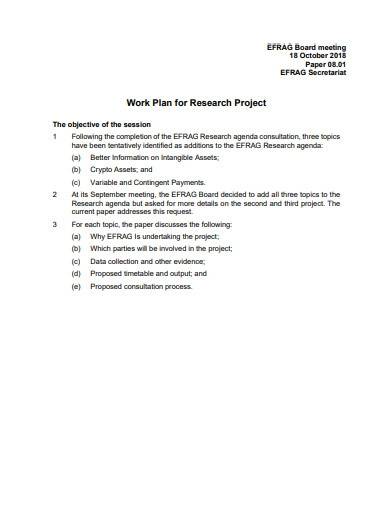
Size: 150 KB

Size: 34 KB
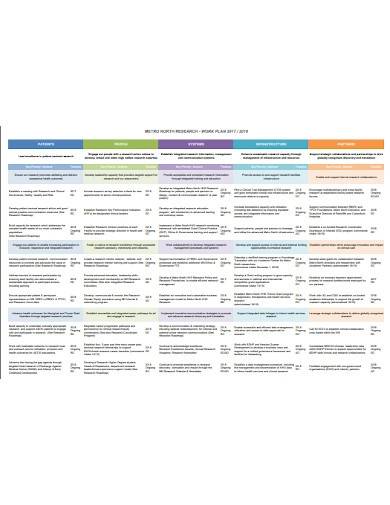
Size: 171 KB
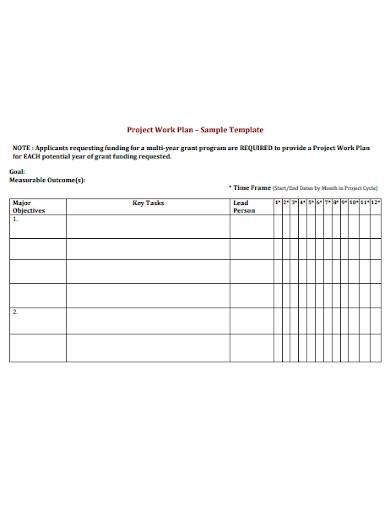
Size: 239 KB
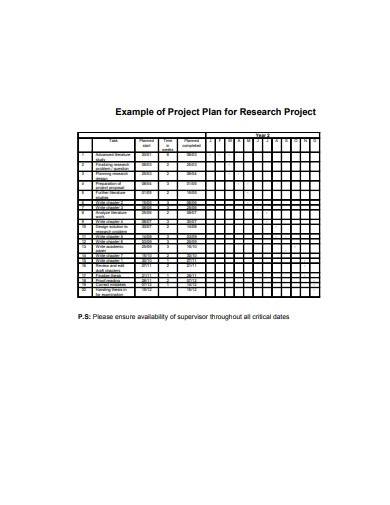
Size: 48 KB

Size: 35 KB
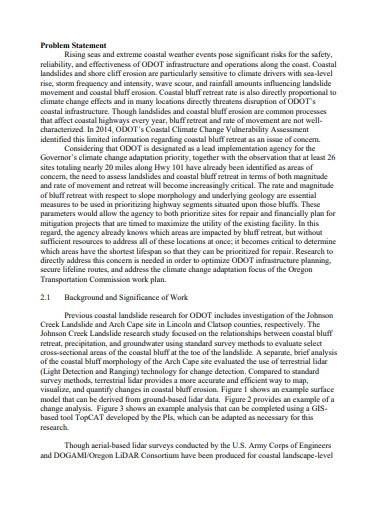
Size: 341 KB
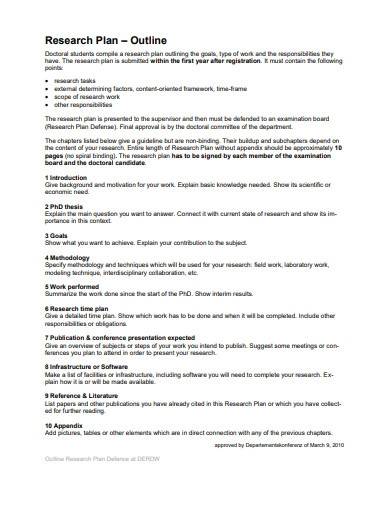
Size: 106 KB
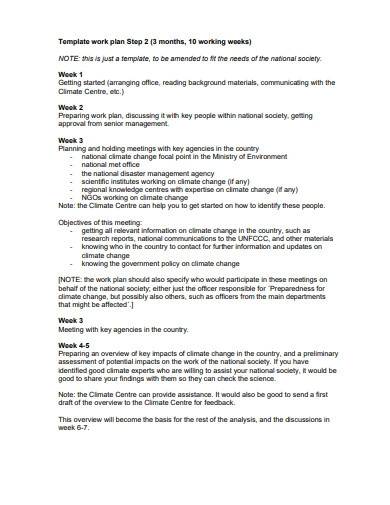
Size: 10 KB
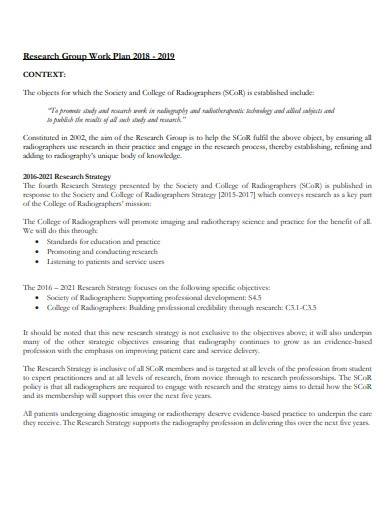
Size: 288 KB
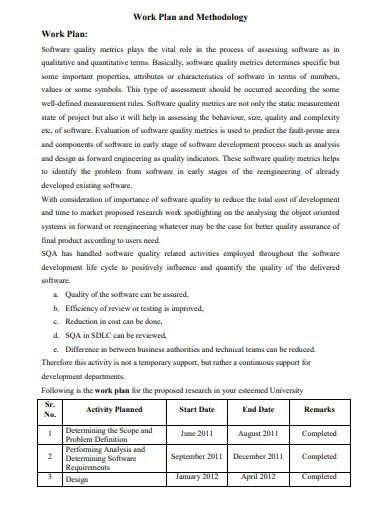
A research work plan is a fundamental document that defines initial ideas and concepts on a specific research project in a structured manner. This is a comprehensive guide that is used by professionals such as educators, scientists, medical practitioners, researchers, and many others in sharing their own thoughts to their peers and collaborators.
When writing a well-detailed plan, you need to be systematic when it comes to developing the subject of your research work by using your intellectual ability, critical analysis, etc. Below are some helpful tips in writing an effective plan :
What are your specific desired research goals, objectives and results? Brainstorm as you think deeper and obtain useful or interesting information while developing your goals and objectives. We suggest that you use some helpful guides such as categorization, explanation, prediction, creating a sense of understanding, evaluation, etc.
After establishing your research goals, you need to draft your introductory plan . This part of your plan acts like a rough sketch of your overall plan. Include some information about your research group or team that will be working together for your project . Simply, make a basic plan on what you will perform to accomplish your goals and succeed in your research work.
The third step is to outline the integral tasks that you need to include in your plan for your research project. Avoid doing some irrelevant things that may decrease your productivity and efficiency. Also, focus on utilizing research strategies such as exploration, testing and problem solving that are associated with your research goals and objectives. Carefully map out your tasks of your research process by using some charts, visual diagrams, and more.
Finally, you can now execute all the significant points for your plan . Make sure to consult or ask some help from your colleagues or other experts in your field as well in reviewing and revising your plan to avoid any misunderstandings on your part.
The key elements of a research work plan are significant definitions, the general approach, a literature review, conceptual frameworks, the research questions and hypothesis.
A good research plan should contain short and concise introduction to the research field, topic relevance, and different kinds of methods used to obtain results such as framework, new technical solutions, etc
The common steps of the research process are topic development, preliminary data research, material or resource location, data analysis, note-taking, and research paper production.
As a formal roadmap for a project, a work plan contains demonstrable objectives, well-detailed steps or methods, and measurable deliverables.
Dale Carnegie said “An hour of planning can save you 10 hours of doing.” Therefore, a comprehensive research work plan is a vital tool to guide you in fulfilling your research goals, objectives, and desired results, especially it saves you an enormous time and effort.To help you in this matter, here are some of our downloadable and printable action plan samples available in different kinds of formats. Simply click the templates in this article and start downloading now!
Related Posts
Free 50+ strategic planning samples in google docs | pages | pdf | ms word, free 10+ construction project plan samples in ms word | google docs | apple pages | pdf, free 10+ construction marketing business plan samples in ms word | google docs | pdf, free 17+ construction business continuity plan samples in ms word | google docs | pdf, free 11+ construction business development plan samples in ms word | google docs | pdf, free 20+ budget planning samples in pdf, free 20+ workout plan samples in ms word | google docs | pages | pdf, free 20+ lesson planning samples in pdf, free 14+ employee work plan templates in pdf | ms word, free 8+ sample weekly meal plan templates in pdf, free 17+ sample classroom management plan templates in pdf | ms word, free 13+ homework planner samples and templates in pdf | ms word, free 14+ leadership development plan samples in ms word | pages | google docs | pdf, free 15+ sample math lesson plan templates in pdf | ms word, free 11+ gym business plan templates in pdf | ms word, free 10+ market research plan samples & templates in ms word ..., free 23+ sample work plan templates in google docs ms word ..., free 11+ sample logic models in pdf ms word, free 30+ action plan format samples in ms word pdf.

Helping our customers through the CrowdStrike outage
Jul 20, 2024 | David Weston - Vice President, Enterprise and OS Security
- Share on Facebook (opens new window)
- Share on Twitter (opens new window)
- Share on LinkedIn (opens new window)
On July 18, CrowdStrike, an independent cybersecurity company, released a software update that began impacting IT systems globally. Although this was not a Microsoft incident, given it impacts our ecosystem, we want to provide an update on the steps we’ve taken with CrowdStrike and others to remediate and support our customers.
Since this event began, we’ve maintained ongoing communication with our customers, CrowdStrike and external developers to collect information and expedite solutions. We recognize the disruption this problem has caused for businesses and in the daily routines of many individuals. Our focus is providing customers with technical guidance and support to safely bring disrupted systems back online. Steps taken have included:
- Engaging with CrowdStrike to automate their work on developing a solution. CrowdStrike has recommended a workaround to address this issue and has also issued a public statement. Instructions to remedy the situation on Windows endpoints were posted on the Windows Message Center .
- Deploying hundreds of Microsoft engineers and experts to work directly with customers to restore services.
- Collaborating with other cloud providers and stakeholders, including Google Cloud Platform (GCP) and Amazon Web Services (AWS), to share awareness on the state of impact we are each seeing across the industry and inform ongoing conversations with CrowdStrike and customers.
- Quickly posting manual remediation documentation and scripts found here .
- Keeping customers informed of the latest status on the incident through the Azure Status Dashboard here .
We’re working around the clock and providing ongoing updates and support. Additionally, CrowdStrike has helped us develop a scalable solution that will help Microsoft’s Azure infrastructure accelerate a fix for CrowdStrike’s faulty update. We have also worked with both AWS and GCP to collaborate on the most effective approaches.
While software updates may occasionally cause disturbances, significant incidents like the CrowdStrike event are infrequent. We currently estimate that CrowdStrike’s update affected 8.5 million Windows devices, or less than one percent of all Windows machines. While the percentage was small, the broad economic and societal impacts reflect the use of CrowdStrike by enterprises that run many critical services.
This incident demonstrates the interconnected nature of our broad ecosystem — global cloud providers, software platforms, security vendors and other software vendors, and customers. It’s also a reminder of how important it is for all of us across the tech ecosystem to prioritize operating with safe deployment and disaster recovery using the mechanisms that exist. As we’ve seen over the last two days, we learn, recover and move forward most effectively when we collaborate and work together. We appreciate the cooperation and collaboration of our entire sector, and we will continue to update with learnings and next steps.
- Check us out on RSS

COMMENTS
If you want to learn how to write your own plan for your research project, consider the following seven steps: 1. Define the project purpose. The first step to creating a research plan for your project is to define why and what you're researching. Regardless of whether you're working with a team or alone, understanding the project's purpose can ...
Here's an example outline of a research plan you might put together: Project title. Project members involved in the research plan. Purpose of the project (provide a summary of the research plan's intent) Objective 1 (provide a short description for each objective) Objective 2. Objective 3.
Step 3: Set a Research Timeline. Set a research blank timeline to help guide the execution of the research work plan. Construct a detailed time plan and show which research work has to be completed and when it will be done. Include other responsibilities or obligations that must be performed in your research project.
Step 4: Write a summary. Prepare a project summary that serves as your research project guide. This invaluable tool aids recruitment interviews, meetings, and field studies. With a well-structured summary, you can stay on track during interactions, ensuring you address key project aspects.
Writing a research proposal can be quite challenging, but a good starting point could be to look at some examples. We've included a few for you below. Example research proposal #1: "A Conceptual Framework for Scheduling Constraint Management" Example research proposal #2: "Medical Students as Mediators of Change in Tobacco Use" Title page
Before conducting a study, a research proposal should be created that outlines researchers' plans and methodology and is submitted to the concerned evaluating organization or person. Creating a research proposal is an important step to ensure that researchers are on track and are moving forward as intended. A research proposal can be defined as a detailed plan or blueprint for the proposed ...
A research plan is a comprehensive document that outlines the entirety of your research project. It details the research process, from defining the problem statement and research objectives to selecting the research method and outlining the expected outcomes. This plan serves as a blueprint for your research activities, ensuring a focused and ...
A research plan is a framework that shows how you intend to approach your topic. The plan can take many forms: a written outline, a narrative, a visual/concept map or timeline. It's a document that will change and develop as you conduct your research. Components of a research plan. 1. Research conceptualization - introduces your research question.
A PhD research plan or schedule can be prepared using the GANTT chart which includes a month, semester or year-wise planning of the entire PhD research work. First, enlist goals and objectives. It's not about your research objective enlisted in your proposal. I'm talking about the objectives of your PhD.
Here are seven steps you can follow to create a research proposal: 1. Define a hypothesis. A hypothesis is a statement that aims to explain the cause of a phenomenon or problem. To write a hypothesis, it's necessary for you to identify this phenomenon or problem and describe why you want to explain it.
Schedule/work plan Though not always required, the schedule or work plan in a research proposal identifies the target dates for significant actions or stages in the proposed research. By identifying timelines, project goals, and due dates, both you and your advisor(s) will be able to evaluate if the proposed schedule is achievable within the ...
Introduction. The Action Plan is a guide to planning for change, and it describes: . A clear picture of where you are currently, where you are going, and where you want to be in 3-5 years. How you are going to get there. Who and what are involved. Elements of the Action Plan. Goal(s) Objectives.
The 7 core components of a user research plan: The background of the research project detailing why we are conducting this study. This can also include the internal stakeholders involved. The objectives and goals of the research, what the teams want to learn from the research, or what they would like the outcome to be.
A well-written research plan should start with articulating the research question and, from there, proceed to mention the purpose, how your project is going to work, what resources you will require, grand of special permissions from organizations ( if needed), setting the deadline for each part to ending with the finance limitations for that ...
A research plan outlines the objectives, methodology, timeline, and resources needed for a research project, acting as a roadmap for systematic investigation. Reforge can enhance the development and execution of research plans with tools and strategies that streamline each phase, from data collection to analysis and interpretation.
A research plan is your research roadmap. And like any map, you use the plan to steer you and your team in the right direction. In essence, it is a document that reminds the researcher of the important details about the study. Plan vs. Proposal. A research plan is different from a research proposal. Although both talks about the study, the ...
Good science, written well, makes a good research plan. As you craft and refine your research plan, keep the following strategies, as well as your audience in mind: Begin the document with an abstract or executive summary that engages a broad audience and shows synergies among your projects. This should be one page or less, and you should ...
What Is a Research Plan? According to an article from Venture Lab, research is essential, especially in business, because it is the avenue for entrepreneurs to generate detailed information about the market and create an effective marketing plan.Research also helps company owners acquire market information that will help them generate more sales and profits.
The research plan, however, serves another, very important function: It contributes to your development as a scientist. Your research plan is a map for your career as a research science professional. As will become apparent later in this document, one of the functions of a research plan is to demonstrate your intellectual vision and aspirations.
12+ Research Work Plan Templates in PDF | MS Word. A work plan is an overview of a series of objectives and procedures by which a team and/or entity can achieve those goals and provide the reader with a clearer picture of the project's context. No matter if it is used in professional or academic life, work plans serve the purpose of helping you stay focused when working on a certain project.
Dale Carnegie said "An hour of planning can save you 10 hours of doing." Therefore, a comprehensive research work plan is a vital tool to guide you in fulfilling your research goals, objectives, and desired results, especially it saves you an enormous time and effort.To help you in this matter, here are some of our downloadable and printable action plan samples available in different kinds ...
Engaging with CrowdStrike to automate their work on developing a solution. CrowdStrike has recommended a workaround to address this issue and has also issued a public statement. Instructions to remedy the situation on Windows endpoints were posted on the Windows Message Center.